- Skip to main content
- Skip to primary sidebar
Jenna Copper
Teaching Secondary English Language Arts

Subscribe to receive freebies, news, & promos directly to your inbox.

How to Use Picture Books to Teach Literary Analysis

In 2013, we had our first baby, Gianna. Taking the advice of a mentor and a colleague*, I started collecting picture books. With a bouncy baby girl on my knee, I read classics, like “Goodnight Moon , ” and New York Times best sellers, like “The Pout-Pout Fish.” It didn’t take long for me to realize their complexity. Then, something else strange started happening. I began to see literary concepts jump out at me right from the pages. It wasn’t long before I started conducting research.
Picture Books Research
I discovered that back in 1984 authors Beckman and Diamond suggested the benefit of using picture books with kids of all ages to promote language arts learning. Though the focus of their work was on middle school and junior high levels, the authors identified significant universal experience. Namely, they indicated the same misconception that many of us secondary teachers hold: “[teachers] may assume their students are too old for picture books” (p. 102), and Watson (1978) expressed another: teachers conclude that picture books for big kids are “too babyish” (p. 208). On the contrary, I found many researchers who agree that picture books provide an accessible way to add varied materials to the curriculum, improve reading comprehension, incorporate visual literacy, stimulate higher-order creative thinking, and introduce vocabulary with rich language (Beckman & Diamond, 1984; Giorgis, 1999; Senokossoff, 2013; Tiedt, 2000; Watson, 1978).
Getting Started with Picture Books
I am so excited to share my research using picture books in secondary ELA to teach literary analysis. Because this is a topic that I fear too many secondary teachers (my former self included) pass off as too elementary or not academic, I find it important to share my research and sources. This article will not only help you plan your own lessons using picture books, but it will provide you with the support to justify its value and feel confident with this topic. I presented on this topic at the Keeping the Wonder Workshop Season 1, and if you’re interested in learning the exact lesson plans that I use, I’d love for you to join our virtual workshop where I break down this information further.
The first step is to understand the ways that picture books can be used in your secondary ELA classroom. I created three overarching actions to help me when lesson planning: 1) introduce a literary concept, 2) explore literary devices, and 3) extend a literary theme.
Introduce a Literary Concept with Picture Books

A picture book read aloud is a great anticipatory activity to introduce a literary concept. In fact, I’ve used a traditional read aloud model to introduce literary concepts, such as tonal shifts. My Advanced Placement Literature and Composition students often have a hard time connecting tonal shifts in poetry to author’s purpose. Therefore, I started the lesson with a read aloud of the well-known picture book, “Llama Llama Red Pajama” by Anna Dewdney. This picture book about a little Llama waiting for his mother to check on him before bed includes several deliberate tonal shifts tied to the author’s intent: to show little readers that they shouldn’t panic when their parents have work to do at bedtime. While this message of patience is a good reminder (myself included), the real magic happens when my students recognize the significance of the tonal shifts.
These tonal shifts are brilliantly represented by rhythmic verse and memorable illustrations, which help my secondary students identify the tonal shifts and connect them to the purpose. After introducing this concept, students have a much easier time applying their understanding of tonal shifts and author’s purpose to 17th century poetry.
In this example, I use a picture book to introduce a challenging literary concept, tonal shifts. The read aloud structure is an important aspect of this introduction. In fact, reading aloud to adolescent students helps them to understand “the power of the spoken word and the bond that develops between speaker/oral reader and audience” (Megyeri, 1993, p. 186). Performing a read aloud to students is something that takes practice, and I do mean performing. Using intentional voices for dialogue, inflection, and emotion help students understand tone and mood and increases their engagement. If you don’t feel comfortable right way (or ever), there are other strategies to incorporate picture books for academic purposes that require student voices.
Explore Literary Devices with Picture Books

This next method involves student voice as an inquiry-based approach, an approach that requires students to explore a question, problem, or scenario to arrive at an understanding, solution, or hypothesis, and as a way to build what Jacobson (2015) described as a “community of readers” (para. 17). Using a stations strategy, I identified five literary devices. Then, I paired a children’s book with each literary device. Students worked in groups of five to complete the task of 1) reading the book aloud by taking turns, 2) defining the literary terms through their own research, and 3) identifying how and why the literary term was exemplified by the picture book.
For example, when my AP Language and Composition students were studying writer’s craft, station one was the picture book, “All the World,” by Liz Garton Scanlon, which was paired with the term, asyndeton, and station two, included “Goodnight Moon,” by Margaret Wise Brown paired with the term, polysyndeton. Each station followed this pattern. By the end of the activity, the students read a total of five picture books and explored each term through an inquiry-based approach. They overwhelmingly agreed that this process was much more engaging and helpful than a typical slideshow and notes lesson.

Sign up here, and I’ll email you my favorite picture book pairings!
Extend a Literary Concept with Picture Books

The final category that I identified is to use picture books as an extension of a literary concept, theme, or unit of study. In other words, once the concept is taught, a picture book can function as an extension or remedial activity. Jacobson (2015) used the term “companions to classics.” In this case, picture books provide a new lens for which to interpret important themes and concepts (Jacobson, 2015). In addition, visual literacy, the skills necessary to analyze the complexities of an image, is an important skill that can be developed during these supplemental lessons (Senokossoff, 2013).
In my AP Language and Composition class, students analyzed the rhetorical situation in Malala Yousafzai’s Nobel Peace Prize Acceptance Speech. After studying her speech, I performed a read aloud with Malala’s picture book, “Malala’s Magic Pencil.” The visual imagery and symbolism is spellbinding. Not only does it highlight a moving rendition of her harrowing personal and global triumph for girls’ education against misogyny and violence, but it also signifies the core of her message as expressed in her acceptance speech.
When it comes to student interaction with picture books, traditional approaches to analysis can be applied to picture books. In fact, picture books provide an excellent opportunity for close reading both textually and visually and a new lens for discussion and analysis (Senokossoff, 2013). Depending on your classroom goals, guided listening and looking activities can be completed before, during, or after read alouds or group activities. These guided reading opportunities can align specifically to your classroom goals.
Here are some additional ideas that can be used as your extension activity:
- create picture books mimicking the writer’s style and diction
- analyze the effectiveness of the illustrations
- write and share a critic’s review of the picture book
- analyze the subject, occasion, audience, purpose, and speaker
- complete a reader response journal entry or free write
- participate in a Socratic Seminar to compare the picture book to the traditional content
When it comes to introducing the selected picture to your secondary students, there are some best practices, or rather worst practices. It’s so easy to start with an apology or a justification for any new strategy, but I caution you to use positive intentional language when introducing the picture book to the class. As you’ve now read, there is a very solid research base to support the benefits of using picture books for secondary students, not to mention the literature that supports the value of picture books in general. Giorgis (1999) expresses this very clearly: [when a teacher]
apologizes to the students and tries to explain the reasons for bringing a book for “little kids” to the class. Students immediately perceive that they are going to be “read down to” and often are put off by the experience. If students reject picture books in their classroom, the question should be raised as to how the book was introduced. If the picture book is explained as an inferior text, then students will develop a negative mindset before the reading occurs, and the experience is doomed to failure. (p. 52)
To summarize, when introducing picture books treat them with the academic value they deserve, and watch your students literary analysis skills soar to new heights.
*The advice from my mentor was “love them and read to them.” It’s advice that I’ve tried to use as a mom and a teacher.
Beckman, J., & Diamond, J. (1984). Picture books in the classroom: The secret weapon for the creative teacher. The English Journal, 73 (2), 102-104. doi:10.2307/817545
Giorgis, C. (1999). The power of reading picture books aloud to secondary students. Clearing House, 73 (1), 51-53.
Jacobson, L. (2015). Teachers find many reasons to use picture books with middle and high school students. The School Library Journal . Retrieved from https://www.slj.com/2015/09/books-media/teachers-find-many-reasons-to-use-picture-books-with-middle-and-high-school-students/#_
Megyeri, K. A. 1993. The reading aloud of ninth-grade writing. Journal of Reading, 37 : 184-90.
Robinson, J. (2010). Little kids, stuffed animals, and picture books at a high school? Reading Today, 27 (4), 36.
Tiedt, I. M. (2000). Teaching with Picture Books in the Middle School . Newark, DE: International Reading Association.
Senokossoff, G.W. (2013). Picture books are for little kids, aren’t they? Using picture books with adolescent readers to enhance literacy instruction. Reading Horizons, 52 (3), 211-232.
Watson, J. (1978). Picture books for young adolescents. The Clearing House, 51 (5), 208-212. Retrieved from http://reddog.rmu.edu:2083/stable/30184980
More Resources
For information about how you can use picture books in conjunction with teaching poetry, check out this article I wrote about teaching poetic analysis.
Picture books make a great introduction for literary lenses. Read this article about literary lenses for information.
Share this:

You may also like

How to Teach Transcendentalism to High School Students

How to Introduce Diverse Perspectives in the ELA Classroom

How to Teach Close Reading and Annotation
Get started by downloading my free resources.

FREE WRITING LESSON GUIDE
How to teach argument, informative, and narrative writing
GET ORGANIZED

FREE READING UNIT PLANNER
How to create an engaging reading unit quickly and efficiently
GET PLANNING

FREE DIGITAL ART TUTORIAL
How to create digital art for any text using Google Slides
Reader Interactions
September 13, 2019 at 4:06 am
I’m geeking out right now because you quoted and cited my former professor, Dr Cyndi Giorgis! Best teacher and mentor I’ve ever had!
September 21, 2019 at 12:57 pm
Wow! What a small world! Thank you for sharing. This made my day!
Leave a Reply Cancel reply
Your email address will not be published. Required fields are marked *
Notify me of follow-up comments by email.
Notify me of new posts by email.

20 Picture Books for High School English
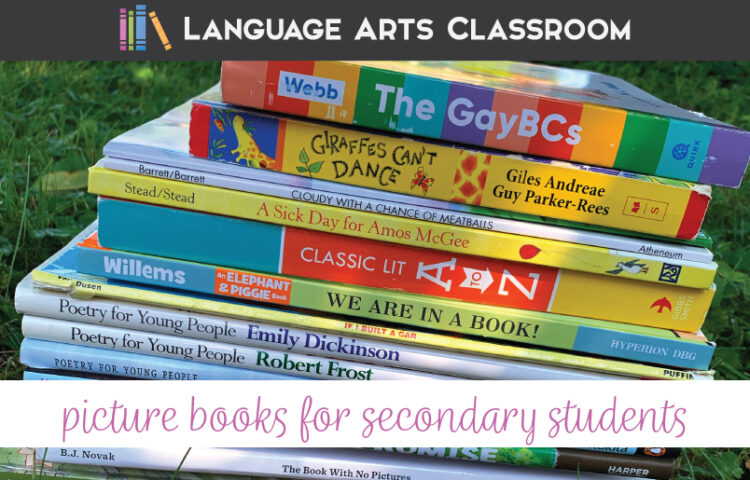
Are you using picture books for high school English classes?
Whether you have five extra minutes in class or you need to add another dimension to your lessons, these twenty picture books for high school English will benefit your classroom. At first, you might be skeptical that children’s books, picture books, pre-chapter books—whatever you call them—belong in the high school classroom. They absolutely do!
Picture Books with High School ELA
Years ago, I began exploring ways to implement picture books in my secondary classroom. Students responded well, and our discussions covered concepts that never appeared within our normal curriculum. Students picked up these books and read them when they had a few extra minutes. I find students browsing them, simply enjoying literature, before the bell rings. Basically, I’ve acquired dozens of picture books for my older students and incorporate diverse topics with picture books into my lessons, and I continue growing my collection.
Below, I’ve included twenty picture books * that work well with my secondary English students. For ease of providing examples, I divided the books into six categories: social emotional learning, creativity, kindness, everyone can write, poetic devices, and background knowledge. Those categories came from conversations students and I had, but I’m sure as you use these books and other ones, you’ll think of other categories.
And? You don’t need categories! Sometimes a bit of structure might give you an idea of where you can add a picture book, but don’t hesitate to grab one and just share it with your students. Read on for twenty fabulous picture books.
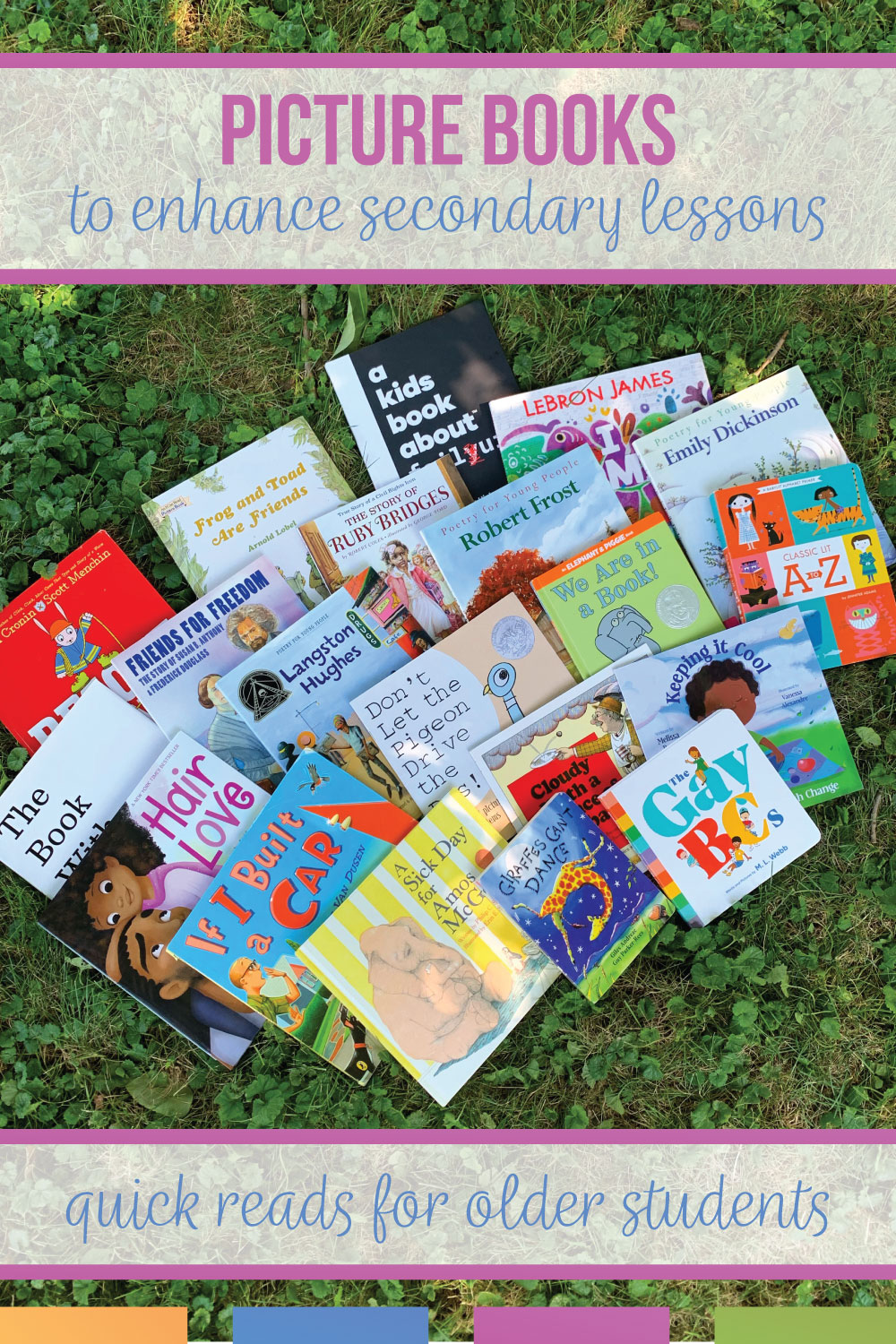
Social Emotional Learning with Picture Books for High School English
Reading older students as you discuss taking care of yourself and working with others can feel awkward. Since I dislike simply bringing a topic out of nowhere, I use a book to discuss SEL topics. The books provide an opening for discussion and a loose framework.
Here are three picture books to use with SEL.

Book: A Sick Day for Amos McGee
Overall: Amos visits his friends at the zoo every day. One day, he is sick and stays home to rest. His friends visit him.
Discussion: Even though Amos had a schedule, he knew when he needed to stay home sick from the zoo. (A reminder that I often need. . .) His friends cared enough about him to visit him and help him as he had helped them. Our society is changing, more toward staying home when you are sick rather than forcing yourself to go to school or work. This book is a great example of taking care of yourself and helping friends.

Book: a kids book about failure
Overall: Misspellings and mistakes are kept in this peppy book about failure.
Discussion: Dr. Layman Hicks acknowledges the feelings that accompany failure and the many times in life a person can face failure. He also stresses the growth and experiences people have when they attempt something new —knowing they might fail.
This book works well after a rough lesson! I had a coworker use this book in conjunction with writing feedback.
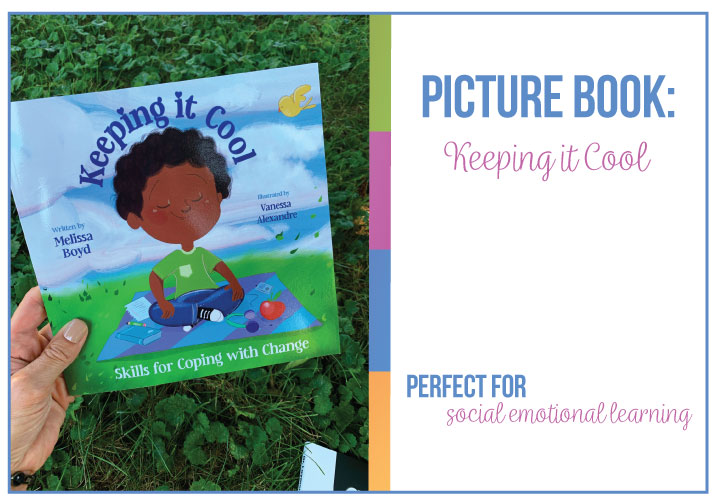
Book: Keeping It Cool
Overall: I love Melissa Boyd and own her other book, B is for Breathe . Boyd is a psychologist, and her books focus on developing healthy coping skills. Both books will provide steps for coping.
Discussion: Sometimes, older students simply lack the tools for coping with stress, change, and other tough situations. Not a lot of discussion is required with Boyd’s books because they are outlined so well—which is perfect for older students who might not readily discuss that they struggle to deal with overwhelm.
Creativity with Picture Books for High School English
With any class, but specifically with creative writing , students often need a pep talk about creativity.
What is creativity? Well, that concept is hard to articulate, but people often know creativity when they see it. Part of creativity comes from authentically sharing ideas, no matter how silly you fear others might think they are. Here are two picture books that model creativity in different ways.
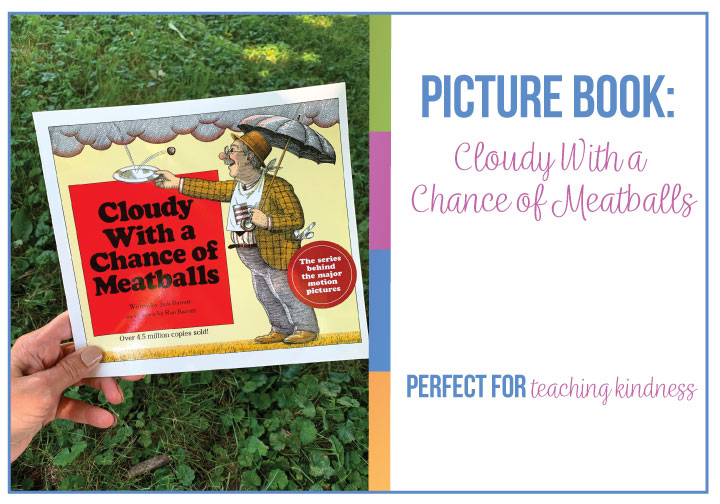
Book: Cloudy With a Chance of Meatballs
Overall: Grandpa tells the tale of a town, Chewandswallow. Food comes from the sky, but eventually, the townspeople leave because the “weather” worsens.
Discussion: The cover of Cloudy With a Chance of Meatballs boasts that over 4.5 million copies have sold—and I just bought it this year! I never read it with my personal kiddos, so I’ll share it with my students. We discuss taking liberties with names, story development, characters, and setting. The story has deeper meanings that students can discover online, but even if you don’t take that approach, you’ll still have a creative story and pictures to analyze.

Book: Hair Love
Overall: Some students may have seen the short that this book is based on. The creator of that short wanted to combat stereotypes and encourage the embracement of natural hair.
Discussion: The book flap of Hair Love says that the book celebrates “the joy that fills you up when you get to express yourself freely.” What would students experience if they expressed themselves freely? What part of their culture do they believe a story would help to provide a different angle?

Book: If I Built A Car
Overall: A little boy wonders what kind of car he would have if he were in charge of building a car. The results are interesting.
Discussion: The entire book rhymes and has a rhythm to it. The car floats, has an ice cream parlor, and drives itself. I wonder if the author wrote about his dream car before he realized what a car can’t do.
Kindness with Picture Books for High School English
Sprinkle some kind messages in your secondary classroom with picture books. Most picture books model good behavior, but these three do so in ways that my older students always appreciate.
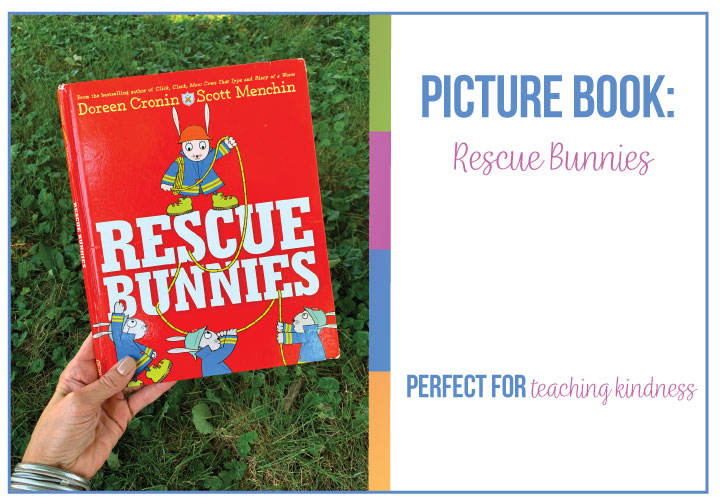
Book: Rescue Bunnies
Overall: Newbie is new to the Rescue Bunny Squad. He must complete tests and follow procedures, but eventually, he breaks protocol and stays with a giraffe who is stuck in mud. He refuses to abandon the giraffe as hyenas approach.
Discussion: The discussion with Rescue Bunnies leads itself. Would you stay with someone stuck in a bad situation? What if hyenas were approaching? Are you comfortable breaking rules for the greater good?

Book: Frog and Toad Are Friends
Overall: I started reading these stories aloud for selfish reasons: They are some of my favorite picture books. Frog and Toad are so mismatched, and they are so grumpy. I love their small interactions like making lists or gardening together.
Discussion: Students typically gravitate to a discussion about friends or couples who simply understand each other—nuances, mannerisms, needs, and wants. More than any other book series, Frog and Toad discussions connect to characters from stories we read as a class.

Book: Don’t Let the Pigeon Drive the Bus!
Overall: The bus driver steps away. The pigeon wants to drive the bus. Readers are not to allow the pigeon to drive the bus.
Discussion: Students love this book, and I get it—it’s hilarious. The pictures are darling. With older students, this book is perfect for discussing peer pressure and the stress that can arrive in unforeseen circumstances.
Everyone Can Write Picture Books for High School English
This category is important to me. One of my classroom messages is that literature, for readers and for writers, is for everyone. I want my students to see themselves as both readers and as writers. I can stress that message with these three picture books for high school English.
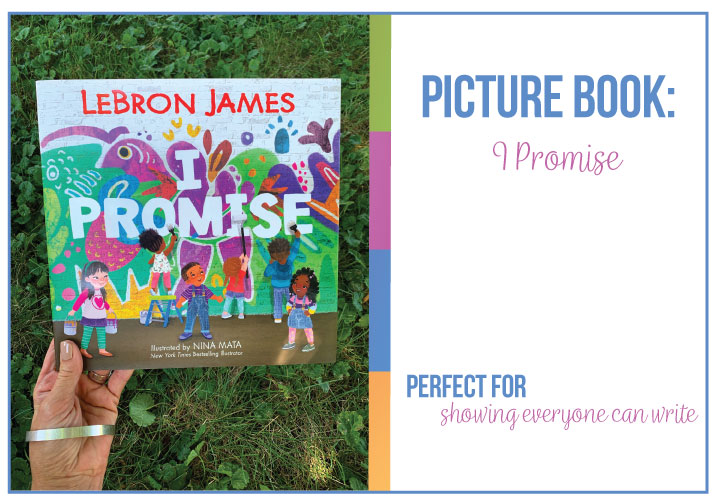
Book: I Promise
Overall: LeBron James walks students through ideas for doing well in life. This book is uplifting and encouraging.
Discussion: Students know LeBron James, but they might not know he is a writer too. In I Promise , he stresses that the promises students make for their lives will help them to succeed.

Book: We Are in a Book!
Overall: Mo Willems’ We Are in a Book! breaks the fourth wall as Elephant and Piggie discuss what page number the book ends and how the reader interacts with the reader.
Discussion: I know that Mo Willems is on my list twice, but students respond so well to his books. Why? Our discussions often wrap back to why this author resonates with so many people. His illustrations and stories are fresh, and my students can write fresh stories too.
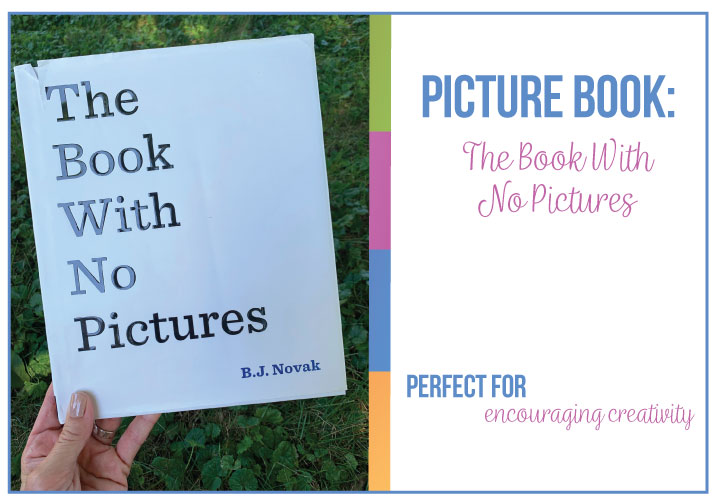
Book: The Book With No Pictures
Overall: How can a picture book have no pictures? This book requires the reader to say ridiculous statements, so be prepared for your teens to laugh at you.
Discussion: Students know the author from his acting work, but they might not realize he is a writer too. Hence, everyone can write.
Poetic Devices with Picture Books for High School English
Throughout my poetry units, I read from picture books. Students might tell me that they don’t enjoy poetry, but I want to show them that they have already read poetry, probably as young children. These picture books provide scaffolding and examples for poetic devices.
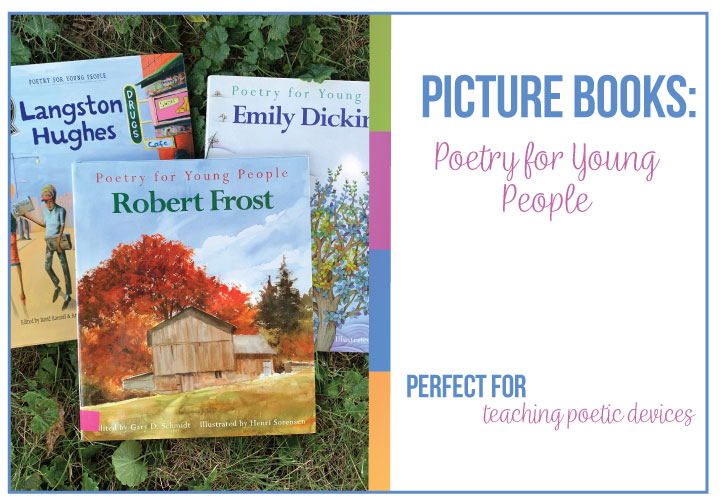
Book: Poetry for Young People (series)
Overall: These poetry books are beautiful and contain brief histories of the author. You can spend about ten minutes on each book—maybe fifteen.
Discussion: When I read about a poet, I ask students to research a bit about the author. Then we combine our knowledge and head into reading the poetry. Along the way, we discuss poetic devices that we learn about together.
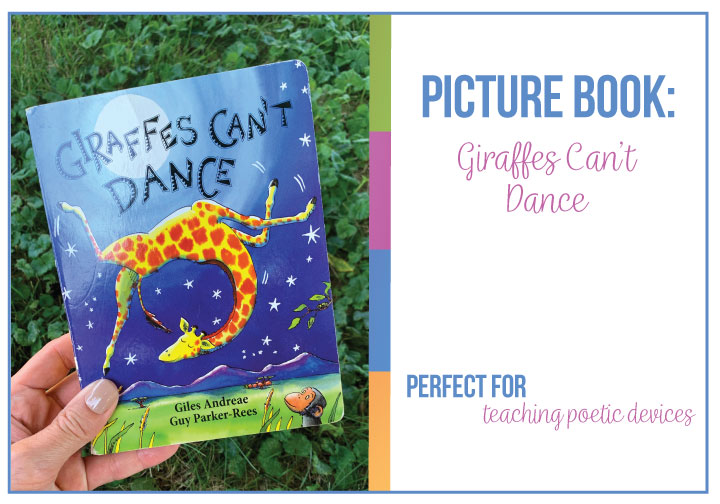
Book: Giraffes Can’t Dance
Overall: Gerald is a sweet giraffe who cannot dance. Other animals can dance. Eventually, Gerald finds music that fits his style.
Discussion: The last page does not rhyme, and that drives students crazy. What is the effect of that? What liberties can an author take with poetry?
Background Knowledge Picture Books for High School English
On a completely anecdotal note, I have found that younger kids do not specifically enjoy nonfiction. That could absolutely not be true in your experience, but overall, older students tell me that they enjoy informational texts more than they did when they were younger. Well, let’s read them! Grab these beautiful books that provide snippets of history, and put them in your students’ hands.

Book: The Story of Ruby Bridges
Overall: Ruby Bridges is a Civil Rights icon and activist.
Discussion: The author of this book is a psychology professor at Harvard. Often, I start the discussion after reading this book by asking why a psychology professor would write about Ruby Bridges. Older students immediately pick up on the trauma and study that diverse fields have with the Civil Rights Movement. Our conversation unfolds from there.
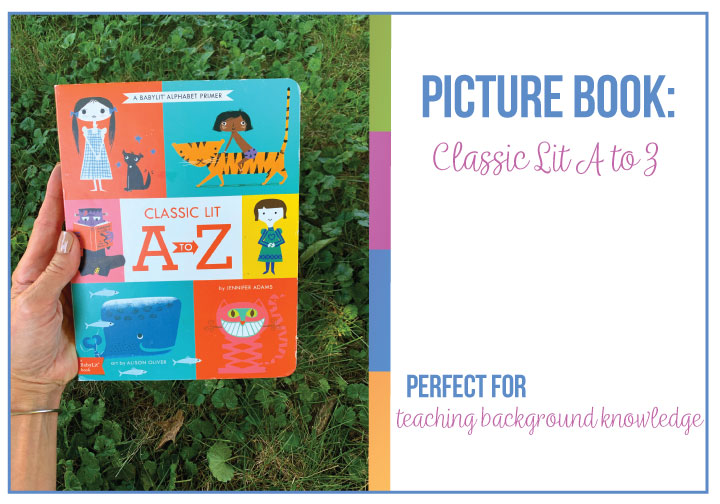
Book: Classic Lit A to Z
Overall: This book is a simple A-Z book with references to Romeo and Juliet , Wuthering Heights , The Wizard of Oz , and more.
Discussion: Some students enjoy the classics, and this book has snippets about each character or book that each letter references. Our best discussions with this book come from our realizations over what books we have read and either enjoy or dislike.

Book: Friends for Freedom
Overall: Did you know Susan B. Anthony and Frederick Douglas were friends? Had disagreements like friends? Their history is interesting!
Discussion: When I teach about important historical figures like Frederick Douglass with his Narrative of the Life of Frederick Douglass , I try to pull in other pieces to show students many parts of his life. Hopefully, additional research and information will spur interest and encourage further research.
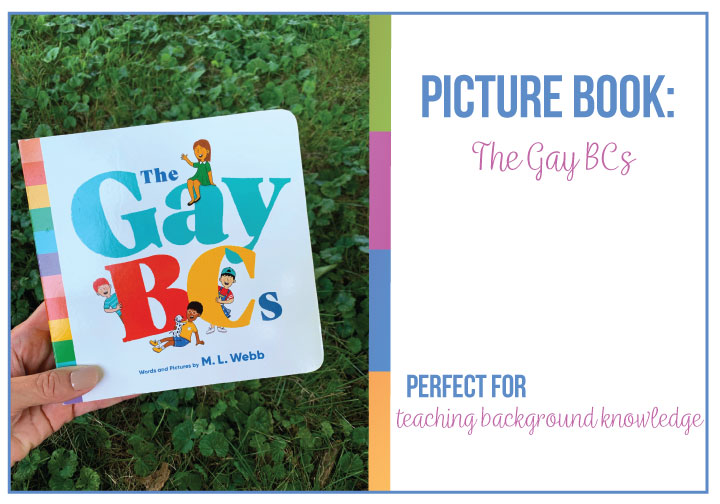
Book: The Gay BCs
Overall: This book has basic definitions for the LGBTQ community.
Discussion: Students simply might not know proper terms, but this book provides basic definitions while normalizing sexual orientations and gender identities. This book is continuously read in my classroom, and when students have a question, we consult it together.
Activities for Picture books
Typically, I use a one pager with my lessons for older students. Students pull verbs, adjectives, and adverbs from a review of several picture books. Then, they reflect on the types of words used.
What do students notice by studying the language in picture books?
Two key concepts: Verbs have power, and modifiers relate to each other. That is, writers use specific word choice to amplify their storytelling.
Then, my high school students and I can apply that concept to our creative writing , a perfect class for using picture books for high school English.
Subscribe to our mailing list to receive updates about new blog posts, freebies, and teaching resources!
Marketing Permissions We will send you emails, but we will never sell your address.
You can change your mind at any time by clicking the unsubscribe link in the footer of any email you receive from us, or by contacting us at [email protected] . We will treat your information with respect. For more information about our privacy practices please visit our website. By clicking below, you agree that we may process your information in accordance with these terms.
We use Mailchimp as our marketing platform. By clicking below to subscribe, you acknowledge that your information will be transferred to Mailchimp for processing. Learn more about Mailchimp’s privacy practices here.
Those are my twenty books!
Since I’m acquiring new picture books (all the time!), I’d love for you to add a title and to explain why it works so well with your older students.
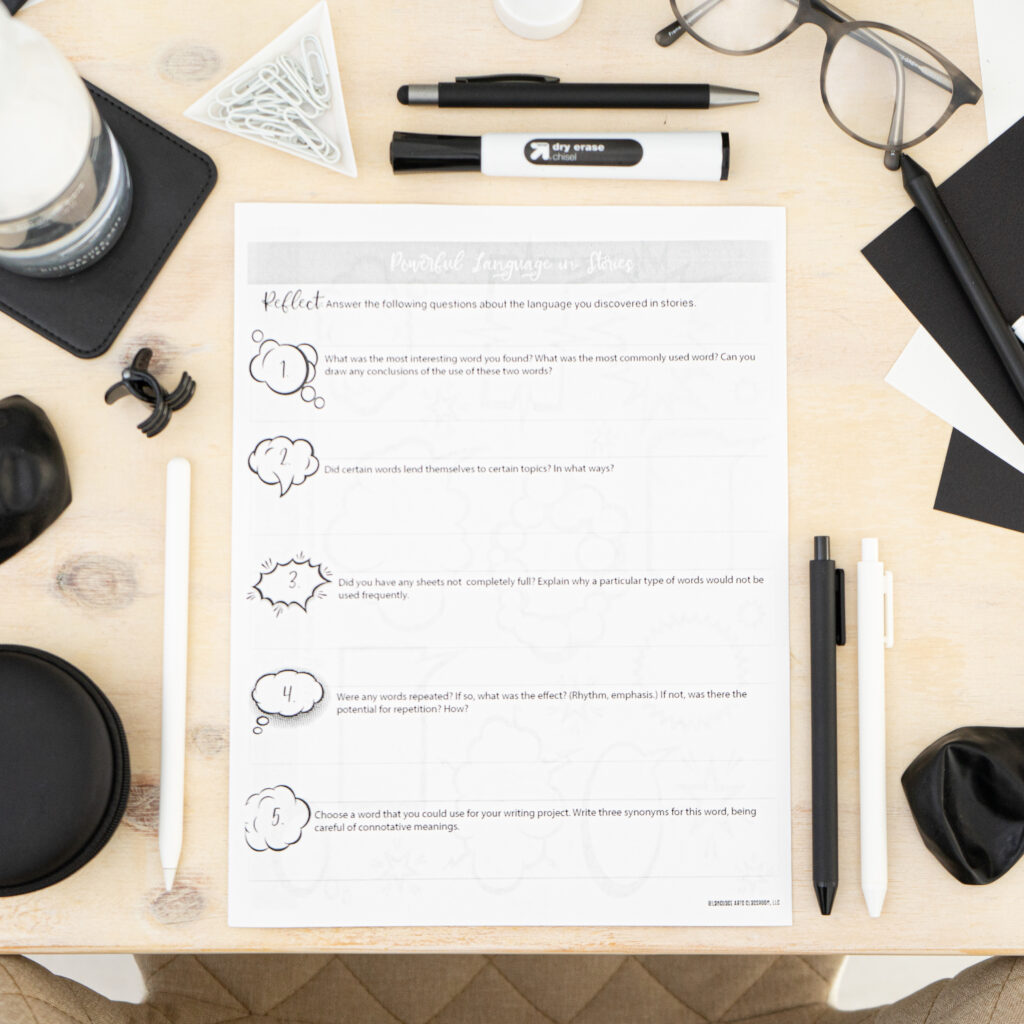
creative writing activities literature picture books SEL learning

- Career Center

Picture Books That Demonstrate Persuasive Writing
In my last post about teaching narrative writing , I mentioned how the subject of writing tends to be a thorn in the side of many homeschoolers. It doesn’t have to be that way, though! In this little series of posts, I hope to encourage you that teaching writing styles to your middle and high school students is as simple as reading a picture book. Literally.
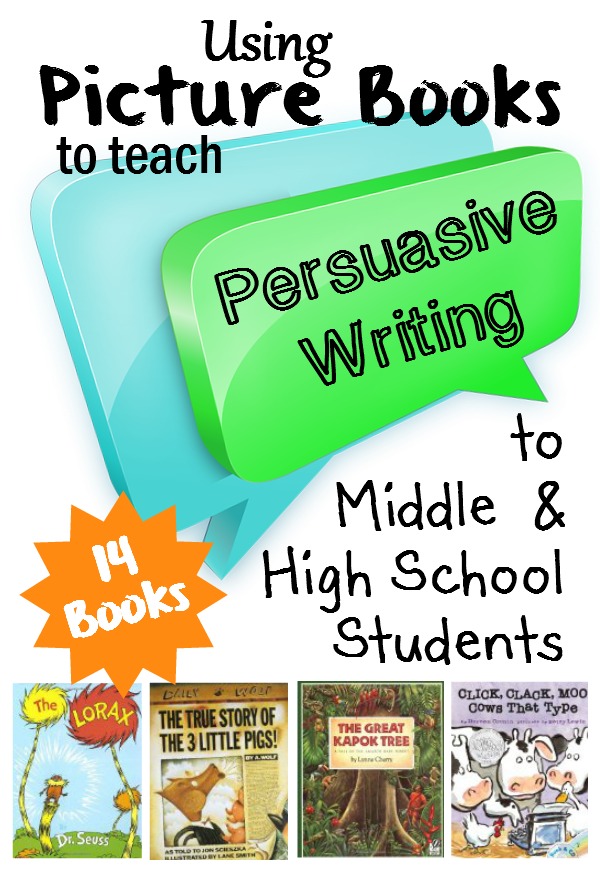
This post contains affiliate links.
Master Writing as Examples for Kids
Master writers, otherwise known as authors of living books, are my go-to resources for teaching excellent writing practices and styles. And, often, I use picture books by master writers to demonstrate particular writing strategies because they make for quick and clear mini-lessons.
Today, I’m sharing several picture books I use when teaching my children to write persuasively. Whether the end goal is a persuasive essay, a speech, an editorial, or even an advertisement, these books can point my big kids in the right direction of writing persuasively.
What is Persuasive Writing?
Most persuasive writing has at least these five key parts:
- A hook in which to grab the reader’s attention (Common in all forms of writing)
- A thesis in which the writer states his belief about the topic
- Supporting arguments to convince the reader that the thesis is correct
- Counterarguments that offer answers to potential objections (Not always necessary)
- A conclusion that restates the thesis
Picture Books that Demonstrate Persuasive Writing
Each picture book on this list uniquely shares a style of persuasive writing that can help your student(s) fine-tune their own writing.

How to Use the Books That Demonstrate Persuasive Writing
Besides simply reading through picture books that demonstrate persuasive writing, I sometimes use bits and pieces of them as mini-lessons to help hone particular skills.
We might talk about what makes a good hook and read the beginning sentences of a few of these books to see how published authors begin their writing.
I might read and reread the thesis from one or more books so we can discuss how important it is to define a clear and concise thesis.
We might analyze one of the books to see how many supporting arguments the author used and how those arguments were presented.
We might talk about the difference(s) in something they have written vs. the master writer. The purpose of this is usually to help my children learn to turn boring, factual writing into more creative writing that someone actually wants to read.
There are so very many lessons you can teach using picture books as examples. One of the easiest ways to start is to simply read a book aloud and ask your student to use the same story structure inserting his own characters, setting, and – in the case of persuasive writing – arguments. Having a skeleton on which to build their own story gives kids a bit more confidence in a new writing style.
Now that you’re armed with some lesson ideas, I can’t wait to hear about all the excellent persuasive writing your teens are doing!
Do you have anything to add? I’d love to hear your tips and tricks for teaching persuasive writing in middle and high school! Feel free to add other picture books that demonstrate persuasive writing in the comments, too!
Need a little more direction in this method?
I taught a practical class that can help!

Be sure to check out the other posts in this series to learn how to use picture books to teach a variety of writing styles!
10 Comments
Such wonderful ideas for teaching writing as I prepare for our first year of homeschooling next year! Thank you!!
You’ll love homeschooling!
We are all really looking forward to it!!
I love this so much! Did you ever write a curriculum to use these ideas with each of the above books, as you did with teaching grammar? Thank you.
Mimi, I am considering writing a curriculum from these ideas! It’s not been written just yet, though. 🙂
I want to purchase some of these books to teach the lessons, as the other lessons you’ve posted, but do you have a top three of the best ones?! Thank you! It seems like such a cool way to teach these concepts!
Tisza, that’s a hard question! 🙂 If I have to pick 3…The Great Kapok Tree, The True Story of the Three Little Pigs, and Click, Clack, Moo, Cows That Type.
The list of books you used in the lesson are not showing up in the blog post. Can you send me the list?
Thanks, Kelley
Kelley, thanks so much for letting me know! I have fixed the post and you can see the list now. :o)
Hi there! I am currently student teaching in a 6th grade classroom. I am having to put together and record a lesson using a picture book. I thought using pictures book would be a great resource to help teaching writing and then I found your post. Would you be able to give me a little more guidance on how you would begin a persuasive writing unit using a picture book? Like for the first lesson of the unit?
Thank so much.
Leave a Reply
Your email address will not be published. Required fields are marked *
Using Picture Books to Teach Plot Development and Conflict Resolution
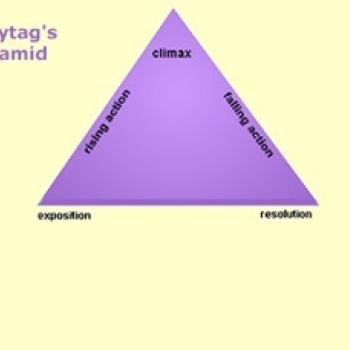
- Resources & Preparation
- Instructional Plan
- Related Resources
In this lesson, students explore the concepts of plot development and conflict resolution through focused experiences with picture books. The class searches the text and illustrations for cues to the development of the book's plot and the resolution of the story's conflict. They then use a graphic organizer to complete a structured analysis of plot and conflict resolution in the picture book. Finally, students have the opportunity to build bridges from their own experiences as readers to those skills needed as writers by revising their stories to strengthen the plot.
Featured Resources
Plot Diagram : Students can use this open-ended online tool to graph the plot of any story.
Story Map : Students use this online tool to map out the elements of their writing. The tool can also be used to analyze the characters, plot, and setting of a piece of literature.
From Theory to Practice
When they are exposed to multiple texts that illustrate effective writing, students naturally begin to think about how the techniques can be applied to their own writing. By modeling the process of reading like writers, teachers demonstrate the kind of thinking that will help students improve their own literacy skills. As Katie Wood Ray states, "the inquiry structures in writing workshops do simply this-they slow down and make more deliberate the reading like writers that happens vicariously when any writer reads. Slowing down lets writers apprentice themselves very deliberately to other writers" (16). This lesson has students examine books that model effective plot development and conflict resolution, encouraging students to use these techniques as they write their own stories.
Further Reading
Common Core Standards
This resource has been aligned to the Common Core State Standards for states in which they have been adopted. If a state does not appear in the drop-down, CCSS alignments are forthcoming.
State Standards
This lesson has been aligned to standards in the following states. If a state does not appear in the drop-down, standard alignments are not currently available for that state.
NCTE/IRA National Standards for the English Language Arts
- 1. Students read a wide range of print and nonprint texts to build an understanding of texts, of themselves, and of the cultures of the United States and the world; to acquire new information; to respond to the needs and demands of society and the workplace; and for personal fulfillment. Among these texts are fiction and nonfiction, classic and contemporary works.
- 3. Students apply a wide range of strategies to comprehend, interpret, evaluate, and appreciate texts. They draw on their prior experience, their interactions with other readers and writers, their knowledge of word meaning and of other texts, their word identification strategies, and their understanding of textual features (e.g., sound-letter correspondence, sentence structure, context, graphics).
- 4. Students adjust their use of spoken, written, and visual language (e.g., conventions, style, vocabulary) to communicate effectively with a variety of audiences and for different purposes.
- 5. Students employ a wide range of strategies as they write and use different writing process elements appropriately to communicate with different audiences for a variety of purposes.
- 6. Students apply knowledge of language structure, language conventions (e.g., spelling and punctuation), media techniques, figurative language, and genre to create, critique, and discuss print and nonprint texts.
- 11. Students participate as knowledgeable, reflective, creative, and critical members of a variety of literacy communities.
- 12. Students use spoken, written, and visual language to accomplish their own purposes (e.g., for learning, enjoyment, persuasion, and the exchange of information).
Materials and Technology
- Writer's Notebooks
- Picture Books that Illustrate Strong Plot Development and Conflict Resolution
- Plot Conflict PowerPoint
- Example Conflict Passage from Dr. Seuss's The Lorax
- Conflict Type Chart
- Literary Elements Mapping: Conflict Map (print version)
- Using Picture Books to Teach Plot Conflict
- Plot and Conflict Development Self-Assessment
Preparation
- Use this activity when you observe students who are interested in revising their writing but need specific guidance. Instead of multiple writing conferences on developing setting , you can hold a focus-lesson with a group or all students invited to attend.
- Before beginning this activity, students should write a piece of writing, which will be the object of their revisions.
- Review Picture Books that Illustrate Strong Plot Development and Conflict Resolution and collect texts that will be used for the lesson.
- Prepare a 4-column chart, using chart paper or an overhead transparency, that matches the Conflict Type Chart . You'll record class details on this chart during the sessions. If desired, you can duplicate the Chart for students to record their observations on individually as well.
- Preview the PowerPoint presentation and download a copy to your machine, if desired, to share with your class. You can also make copies of the PowerPoint slides to distribute to students.
- Arrange for a computer and projector to show the PowerPoint presentation.
- Review The Elements of Plot Development which details how plot is developed.
- Test the Story Map and Plot Diagram interactive on your computers to familiarize yourself with the tools and ensure that you have the Flash plug-in installed. You can download the plug-in from the technical support page.
Student Objectives
Students will
- identify elements of setting development within multiple texts.
- recognize picture books as model texts that exemplify multiple literary elements.
- identify four types of conflict in literature (character vs. character, character vs. self, character vs. nature, and character vs. society).
- apply the elements of plot development and conflict resolution to revisions of their own writing.
Session One
- Ask your students to respond in writing or verbally to the questions, "What is conflict? What are some times in your life that you have been faced with conflict?"
- Next, ask students respond to the question, "What is conflict resolution in literature? How does that fit into plot development?"
- Discuss the responses as a class, looking for the similarities and differences in their responses.
- Arrange students in small groups.
- Using books selected from the list of Picture Books that Illustrate Strong Plot Development and Conflict Resolution , invite groups to explore the picture books, paying particular attention to the conflict in the books.
- Gather as a whole group, and ask students to share the conflicts they saw in the books. Record these conflicts on the board/chart paper.
- When all of the groups have shared, ask the students if they see any similarities between the different types of conflicts.
- From that question, ask the students if they can combine and categorize similar conflicts.
- Next, ask the students if they can label the different types of conflict.
- Using the students' responses, guide them to the labels of "Character vs. Character," "Character vs. Self," "Character vs. Nature," and "Character vs. Society."
- Now that students have seen more examples of conflict in literature, invite them to begin crafting a working definition of plot development and conflict resolution in their notebooks or reading response or writing journals.
- Post your Conflict Type Chart where all students can see it. Ideally, create a chart paper or overhead transparency version of the chart. If desired, distribute copies of the chart to students or ask them to create similar charts in their notebooks or journals.
- Using their initial definition of plot conflict, ask students to write their interpretation of each of the above types of conflicts. Students can also add examples from literature of items that fit into each of these categories.
- Help students work through their definition of plot conflict by viewing the Plot Conflict PowerPoint Presentation (or hand out copies of the slides to the students).
- After examining the PowerPoint presentation, invite students to revise and add to their working definitions.
- As a class, devise working definitions that you will use as a class. Record these definitions on the board/chart paper.
- Using a book from the list of Picture Books that Illustrate Strong Plot Development and Conflict Resolution , read a selected passage or show an illustration which demonstrates one of the types of conflict. For instance, if you share The Lorax by Dr. Seuss, read the Example Conflict Passage from Dr. Seuss's The Lorax where the Lorax describes the plight of the Brown Bar-ba-loots.
- Ask the students to write short sentences about each passage or illustration in their journals or notebooks. In addition, ask the students to identify the type of conflict and the reasons for the category they have chosen. For the passage from The Lorax , students should notice the conflict of character vs. character in the comments that the Lorax makes to the Once-ler and the conflict of Character vs. Nature in the plight of the Brtown Bar-ba-loots as well as in the way that the Once-ler is interacting with the Truffula trees in the story.
- Encourage the students to use words from the text. As they provide examples, refer to the words in the book and reread the word or phrases so that they see and hear them within the context of the story. For the passage from The Lorax , echo phrases such as "hacking my trees to the ground," which describes the Once-ler's treatment of the Truffula Trees and the conflict between the Once-ler and the Lorax.
- Ask students to share what they have written for each illustration in pairs, small groups, or as a whole class. Listen to the discussion to assess the students' understanding of the conflicts.
- What words and phrases does the author use to help you learn about the story's conflict?
- What events does the author use to help you learn more about the conflict?
- How do the illustrations help you learn about the plot and conflict?
- Invite students to make observations and draw conclusions about how authors make the plot and conflict they write about vivid and believable. Take notes on their observations on the board. Save these notes for students to refer to when they are revising their own writing independently.
- If there is time left at the end of the session, allow students to explore the picture books from the list of Picture Books that Illustrate Strong Plot Development and Conflict Resolution . Listen for any comments students make about the plot or the illustrations.
Session Two
- Once students have recognized several examples of plot conflict within the picture books, divide the class into groups of two or three students each, depending on the number of texts available.
- Give each group a picture book, making sure that all four types of plot conflict are represented throughout the groups.
- Ask students to read the picture book in their small group, and find examples of plot conflict.
- Demonstrate how to use the Story Map . Ensure that students understand how to find the "Conflict Map" in the interactive.
- Ask groups to complete the "Conflict Map" in the Story Map to record their findings about the plot anc conflict in the book they analyzed. If computers are not available, pass out copies of the Literary Elements Mapping: Conflict Map and ask students to complete the graphic organizer in the middle of the page.
- While student groups work, circulate through the class providing encouragement and feedback.
- Gather students work at the end of the session and review the Conflict Maps for evidence that students understand the concepts of plot and conflict.
Session Three
- Once students seem confident in identifying the components of plot conflict, ask them to join you for a lesson on how they might revise a piece of their writing.
- Ask students to select a piece of their own writing that tells a story and that they believe can be revised for stronger plot development.
- Allow students time to revise their writing piece, encouraging them to return to the information that they gathered as they read. Suggest that they consider the words and situations that they found in their reading and think about how to use that information to inspire their own writing.
- If desired, students might complete the "Conflict Map" in the ReadWriteThink Story Map interactive for their own piece of writing.
- Once students have had the opportunity to revise and enhance the plot development in their piece of writing, ask them to assess their work using the Plot and Conflict Development Self-Assessment or participate in a peer review of their work.
- For students who need more support through the revision process with their own writing, the Plot Diagram interactive can be helpful. By first plotting out examples of plot development from their own writing, students can see opportunities for revision in smaller steps.
- During the revision process, invite the students to share a piece of their writing in a peer-review situation. In that pair, invite the students to brainstorm ways to change the plot by substituting a different type of conflict. For example, if their original piece included a character vs. character conflict, the students to change the plot to be character vs. self or character vs. nature, and brainstorm what that revised story would look like.
- For additional lessons on using picture books to teach about literary elements, visit Using Picture Books to Teach Setting Development in Writing Workshop and Using Picture Books to Teach Characterization in Writing Workshop .
- Use the ReadWriteThink lesson plan Unwinding A Circular Plot: Prediction Strategies in Reading and Writing to introduce another plot structure to students. After exploring the way that circular plots work in picture books, ask students to try the technique in their own writing.
Student Assessment / Reflections
- Analyze the details included on the “Conflict Map” from the Story Map (or the graphic organizer from the Literary Elements Mapping: Conflict Map handout) to determine how well students understand the plot conflict and the four different types introduced. If a group needs additional support, use activities from the Using Picture Books to Teach Plot Conflict handout to explore additional picture books with group members.
- Once students have had an opportunity to revise and enhance the setting development in their writing, have them complete the Plot and Conflict Development Self-Assessment to identify the effectiveness of the changes in their revisions and suggest topics for additional focus lessons.
- Comparing original and revised versions of students’ work will demonstrate how much they were able to apply the elements of setting development to their own writing.
- Lesson Plans
- Professional Library
- Student Interactives
The Story Map interactive is designed to assist students in prewriting and postreading activities by focusing on the key elements of character, setting, conflict, and resolution.
The Plot Diagram is an organizational tool focusing on a pyramid or triangular shape, which is used to map the events in a story. This mapping of plot structure allows readers and writers to visualize the key features of stories.
Add new comment
- Print this resource
Explore Resources by Grade
- Kindergarten K
Trending Post : Books Made Into Movies

28 Picture Books with Simile Examples and Metaphor Examples
This post may contain affiliate links.
Read aloud picture books and look for simile examples and metaphor examples to learn how writers use figurative language to make writing beautiful and convey meaning. Use these favorite mentor texts to show writers how to write using similes and metaphors in their own writing. You are going to love these!
PRINTABLE LIST

Picture Books to Teach Simile Examples and Metaphor Examples
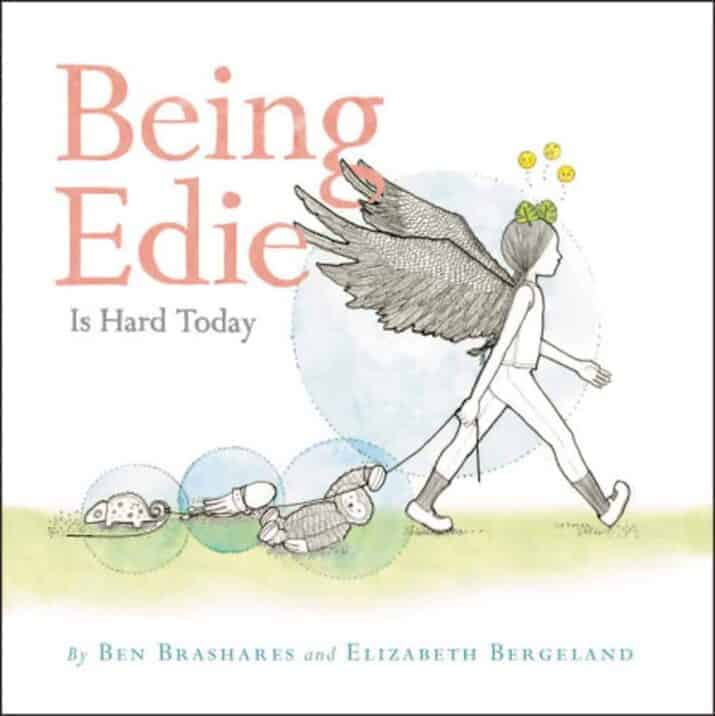
Wilfrid Gordon MacDonald Partridge by Mem Fox, illustrated by Julie Vivas I love this story so much — and read it aloud frequently in my classroom. This little boy exemplifies kindness! He learns his friend, “Miss Nancy,” is losing her memory. He tries to figure out what a memory is and how he can help her remember.
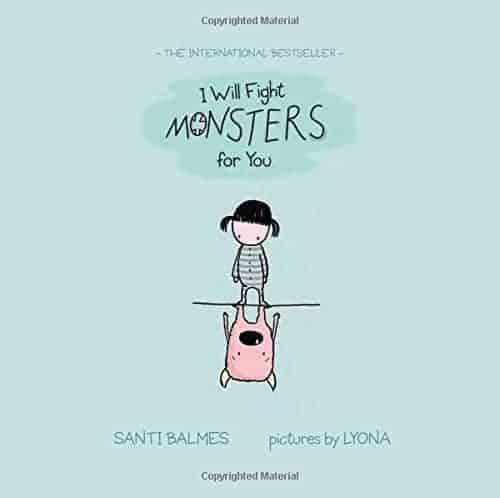
Read these lovely picture books to find simile examples and metaphor examples! They’re full of beautiful imagery and will help your growing writers learn about using figurative language.
Then go forth and write!
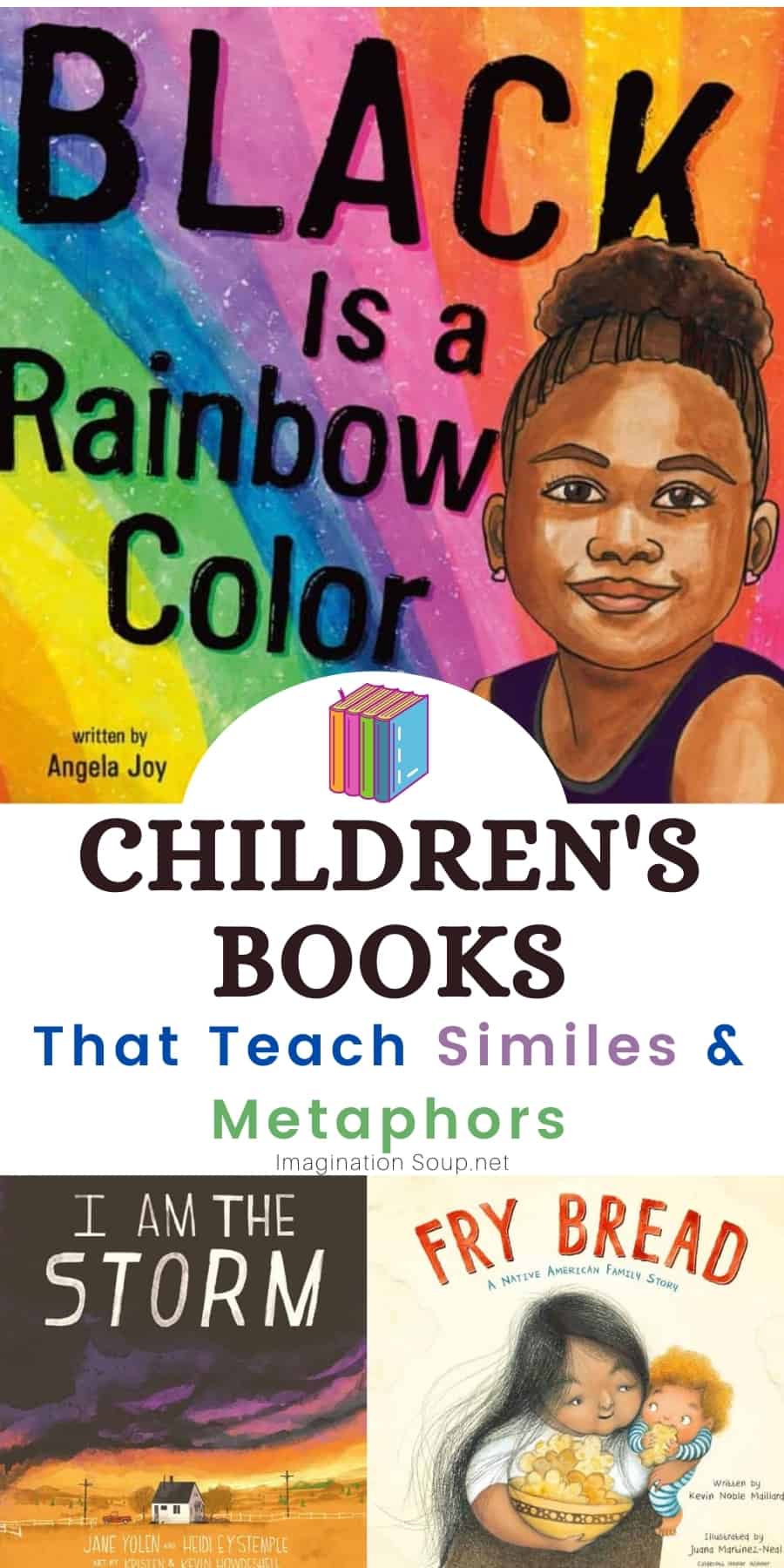
You Might Also Like:
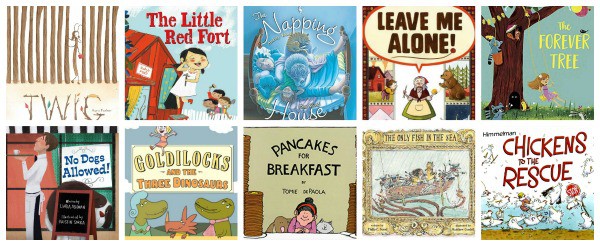
Mentor Texts to Teach Sequencing
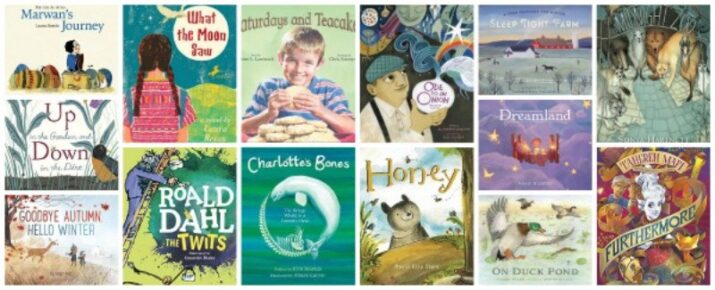
Mentor Texts to Teach Vivid Description

Mentor Texts to Teach Inference
Melissa Taylor, MA, is the creator of Imagination Soup. She's a mother, former teacher & literacy trainer, and freelance education writer. She writes Imagination Soup and freelances for publications online and in print, including Penguin Random House's Brightly website, USA Today Health, Adobe Education, Colorado Parent, and Parenting. She is passionate about matching kids with books that they'll love.
Similar Posts
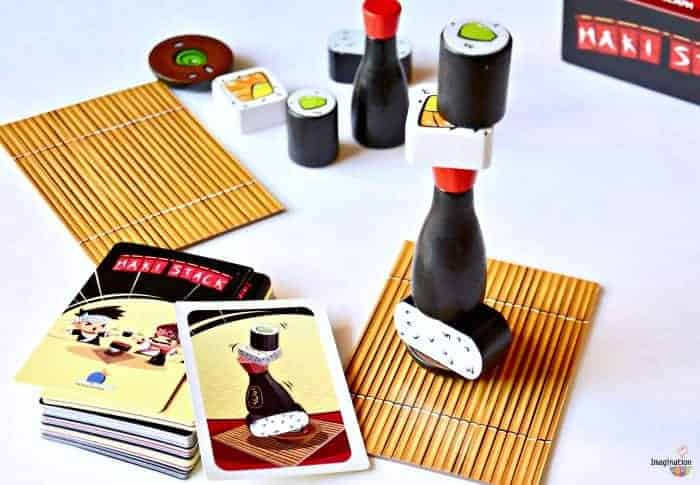
Maki Stack Dexterity and Visual Discrimination Game
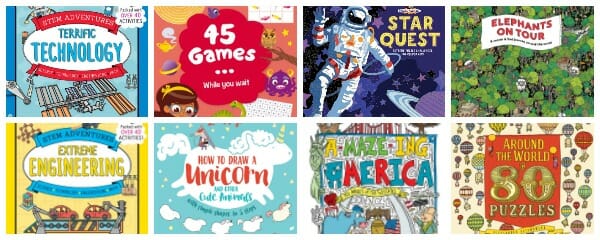
Gift Books for the Holidays: Puzzle and Activity Books

Nonfiction Biography Picture Books
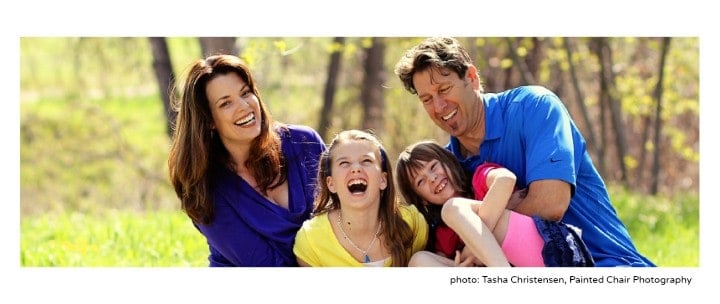
Lessons I Learned the Hard Way (So You Don’t Have To)
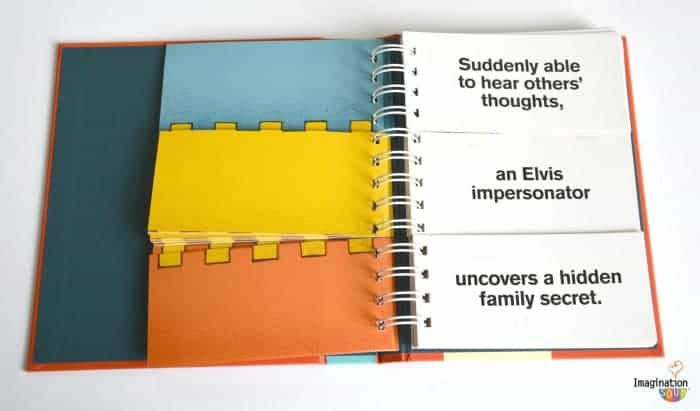
Book with Hundreds of Storytelling & Writing Prompts for Kids
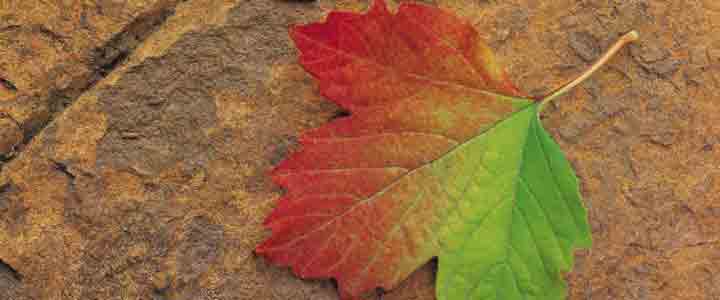

Autumn Scavenger Hunt for Kids
Leave a reply cancel reply.
Your email address will not be published. Required fields are marked *
- Skip to primary navigation
- Skip to main content
- Skip to primary sidebar
- Skip to footer
The Colorful Apple
Picture Books to Teach Descriptive Writing

Picture books are a treasure trove of inspiration for teaching young students the art of descriptive writing. These delightful stories not only captivate young minds but also provide valuable opportunities to explore vivid language and imagery. As an experienced elementary school teacher, I’ve found that using interactive read-aloud lessons with picture books can be a powerful tool for enhancing students’ descriptive writing skills. In this blog post, I’ll share some strategies on how to use picture books to teach descriptive writing effectively.
I’m sharing all of these books on video as well! Check out the Picture Books to Teach Descriptive Writing video on my Youtube channel:
This post contains affiliate links. Read my full disclosure here .
How to Use Picture Books to Teach Descriptive Writing
Step 1: choose the right picture book.
The foundation of any successful interactive read-aloud lesson is selecting an engaging and descriptive picture book. Look for books with rich language, vivid illustrations, and a story that resonates with your students. A great choice often includes a story that evokes strong emotions, places, or characters that students can easily visualize.

Step 2: Pre-Reading Discussion
Before diving into the story, engage your students in a pre-reading discussion. Ask open-ended questions that encourage them to share their thoughts and feelings about the book’s cover, title, or any prior knowledge they might have related to the story’s theme. This discussion helps students activate their prior knowledge and prepares them for a more immersive reading experience.
Step 3: Interactive Read-Aloud
During the read-aloud, use interactive techniques to involve your students actively. Pause at key moments to ask questions about the story, the characters, or the setting. Encourage students to make predictions, share their reactions, or discuss any unfamiliar words or phrases. This engagement keeps students connected to the text and encourages them to think critically about the descriptive elements.

Step 4: Visualizing and Describing
After completing the read-aloud, it’s time to dive into the heart of descriptive writing. Ask students to close their eyes and visualize the story in their minds. What do they see, hear, smell, taste, and feel? Encourage them to use their senses to create mental images of the story’s elements. Then, have them share their descriptions with the class. This activity helps them practice using descriptive language.
Step 5: Identifying Descriptive Language
Now, revisit the text together and identify descriptive language used by the author. Highlight vivid adjectives, colorful metaphors, and any other literary devices that contribute to the story’s imagery. Discuss how these choices by the author make the story come alive and create a clear picture in the reader’s mind.

Step 6: Guided Writing Exercise
After analyzing the author’s descriptive writing, it’s time for students to practice on their own. Provide them with a prompt related to the story, such as describing a character or setting in detail. Encourage students to use the descriptive language they’ve identified in the book and their own imaginative skills to craft vivid paragraphs.

Teaching descriptive writing through interactive read-aloud lessons with picture books is a creative and effective approach to engage young students in the world of language and imagery. By carefully selecting books, facilitating meaningful discussions, and guiding students in visualizing and describing, we empower them to become skilled writers who can bring their stories and ideas to life with descriptive language.
This method not only fosters a love for reading but also equips students with essential writing skills that will serve them well throughout their academic journey and beyond. So, go ahead and embark on this literary adventure with your students, and watch their writing flourish with newfound descriptive power!
- I Need My Monster by Amanda Noll
- Southwest Sunrise by Nikki Grimes
- Magnificent Homespun Brown by Samara Cole Doyon
- A Gift for Amma by Meera Sriram
- Saturdays & Teacakes by Lester Laminack
- Fry Bread by Kevin Noble Maillard
Listen on the Podcast
Interactive read alouds done for you.
If you’re ready to add more read alouds into your day, I have the solution for you! The Colorful Apple Book Club brings read aloud lessons and activities such as vocabulary, crafts, writing response and discussion prompts, right to you!
No more wondering if the book you found will work for the reading strategy you wanted. No more flipping through pages of countless books to make sure it’s on your students’ listening level. I’ve done all the work for you! Just hit print and you’ll be totally set for your read aloud lessons.

Each month with your membership, you’ll get 5 read aloud lessons and activities to support your students.
Each lesson includes:
- a teacher guide to help you prep the lesson
- an anchor chart that connects to the book and the lesson
- discussion questions that you can print right on sticky notes!
- vocabulary words to help students understand the story
- written response
- activity sheet to practice the skill of the lesson
- craftivity or game that reinforces the skill
- task cards to guide discussion
Ready to learn more about the Colorful Apple Book Club or sign up? Click HERE ! I’d love to walk you through everything you’ll get! I can’t wait to save you time and get these effective lessons in your hands.


6 Upper Elementary Picture Books I Use to Teach Writing
Picture books are not just for primary grade students. I use picture books with my fifth graders during each genre unit to model what good writing should look like. Hidden in these gems, are also great examples of writing skills that they can use during writing time with any genre. I’ve listed below six of my favorites with examples of the writing skills I teach for each one.
Nothing Ever Happens on 90th Street by Roni Schotter

This is my favorite book to teach writing skills. In the story, Eva cannot come up with something to write for her class, so each person on 90th street gives her a piece of advice. Each piece of advice can be used to help guide her writing. For example, the 90th street baker says, “Find the poetry in your pudding.” We discuss what this can mean for writing such as improving overused words, turning an old story into something exciting, etc. I even create a chart with each characters advice for writing so the students can refer to it.
The Sweetest Fig by Chris Van Allsburg

If you are looking to teach students how to develop a strong character, this book will do just that. Chris Van Allsburg is very good at creating a strong character using thoughts and actions. In this book, we discuss how to use a character’s actions to portray their character. Chris Van Allsburg creates this selfish, greedy, character, Monsieur Bibot, through actions and dialogue. It is a great book to demonstrate “show don’t tell.”
The Summer My Father Was Ten by Pat Brisson

I love this upper elementary picture book because these students are able to relate to the plot. In the story, a boy gets carried away with his friends during a baseball game, and ends up ruining an older man’s garden. He feels terrible afterward, and works hard each spring to help the man rebuild it. It is a great story to show rising action and character change.
My Rotten Redheaded Older Brother by Patricia Polacco

I often struggle when teaching personal narrative because I find students often write about the same topics. Since I am departmentalizing and teach four classes, after reading 99 stories about a day trip to six flags, I am ready to cry. Patricia Polacco is one of my favorite upper elementary picture book authors. In My Rotten Redheaded Older Brother , she does a wonderful job in modeling how to write a personal narrative. The story is about a typical brother sister relationship that reaches a turning point and completely changes. After reading this book, I often find students are able to understand more what I am looking for in developing a personal narrative.
The Lotus Seed by Sherry Garland

One strategy that we use for writing is to base a story around an object. In The Lotus Seed , a young woman travels from her home in Vietnam to America. The only thing she has with her to remember her home is this tiny seed from a lotus flower. After I read this story to students, it is amazing what they are able to come up with. I often start by having them do a quick write and make a list of several objects they could write about. They then choose one of these objects to turn into a story. One of the best writing pieces I have ever gotten from a student resulted from this lesson. She based an entire story around a leaf. It was beautiful, and I use it as a model every year!
I Wonder Why Penguins Can’t Fly and Other Questions About Polar Lands by Pat Jacobs

My favorite genre for teaching writing is nonfiction. I love how interested the students become in researching their topics. Often times, they even go home and research on their own. They love to come in and tell me all they have found. I always start with this question and answer book because it peaks student interest in non fiction instantly. Instead of reading fact paragraph after fact paragraph, the book asks several interesting questions based on a topic. There is an entire series to choose from. I usually start the lesson by having students open their writing notebooks. I read several questions and they write down the one they would like to hear the answer to the most. I then go around and have students read their questions and I provide the answer. By structuring the lesson this way, students have more accountability and tend to engage with the lesson more. We then discuss how to structure their own question and answer books when they start researching.
These six books are some of my favorites but I have many more that I use to teach writing. Using picture books is a great way to engage students. Upper elementary students are not too young for these visuals and often need them to be able to understand what we are looking for in their writing!

- picture books
- upper elementary
- writing strategies

Related Articles

How to Teach Making Inferences to Upper Elementary Students
Making Inferences is often one of those skills that students either understand instantly, or…

Vocabulary in Context: How to Teach it and Why it Works
Understanding why and how to teach vocabulary in context has been a skill I’m…
Leave a Reply Cancel reply
Your email address will not be published. Required fields are marked *

Recent Posts
- Teaching Setting in Fiction Writing: Creating Creative Places
- Why You Need to Be Teaching Tiered Vocabulary
- How do you know which vocabulary words you should be teaching?
- Making the Most of Your Morning Work : A Vocabulary Focus
- Interesting Nonfiction Topics Kids Love to Learn About
Recent Comments
- LMBLiteracy on Using Color as a Writing Strategy
- Maerea on Using Color as a Writing Strategy
- Carrie Rock on Tips for Teaching in a Departmentalized Classroom
- mysite on Teaching Content Through Poetry
- LMBLiteracy on Tips for Teaching in a Departmentalized Classroom
- January 2024
- December 2021
- February 2021
- December 2020
- October 2020
- February 2020
- January 2020
- December 2019
- November 2019
- October 2019
- September 2019
- August 2019
- February 2019
- January 2019
- November 2018
- October 2018
- Teaching Ideas
- Uncategorized
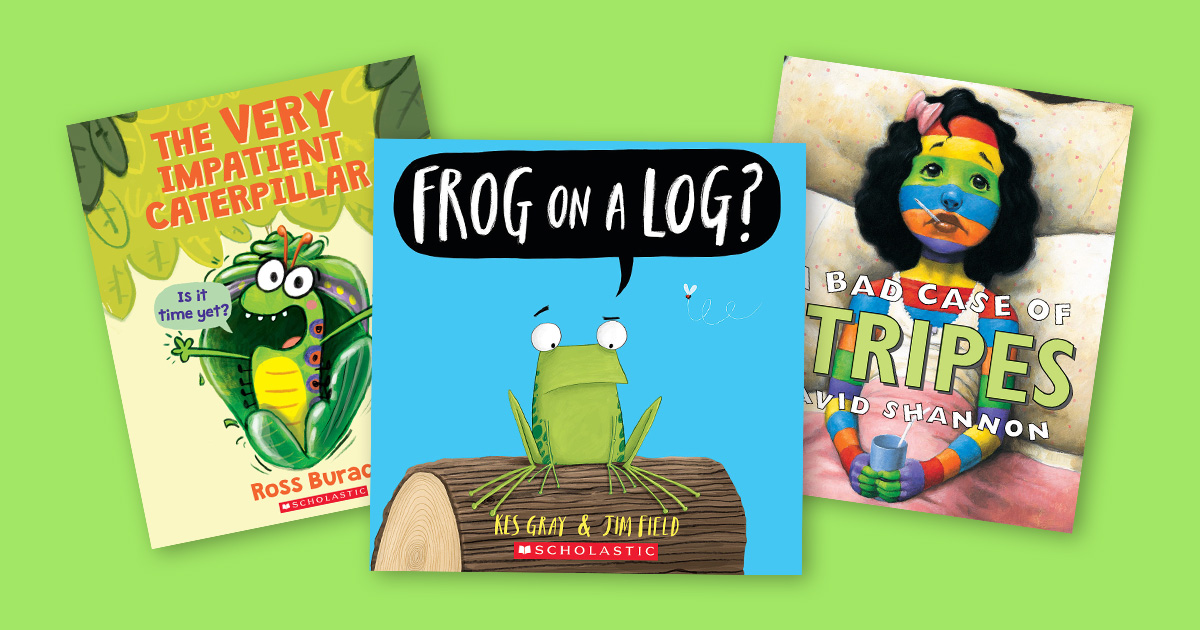
With cherished classics and contemporary award winners, written and illustrated by the superstars of children's literature, these popular picture books are sure to delight readers — young and old — for generations.
Picture books are a timeless way to engage your students with a multisensory experience that can help increase vocabulary, understand sentence structure, and encourage story analysis. Plus, the visual stimulation they offer young children can help them decode the narrative, which in turn increases comprehension.
Where the Wild Things Are , The Snowy Day , Corduroy , and Clifford the Big Red Dog are just a few of the beloved classic picture books featured in this list, along with popular new additions like The Very Impatient Caterpillar , A Bad Case of Stripes , and Frog on a Log?
Shop top picture books below! As an educator, you get at least 25% off the list price when you shop books and activities at The Teacher Store .
Trending Post : 12 Powerful Discussion Strategies to Engage Students

You’re Never too Old to be Young: Using Picture Books with Older Students ~ Part 1
“A children’s story that can only be enjoyed by children is not a good children’s story in the slightest.” ― C.S. Lewis
There are very few things in this world that I love more than picture books. As a high school teacher, for a while I was sad that I wasn’t able to teach the literature that truly made me love reading at such a young age…then I had an epiphany. Really, it shouldn’t have been such an “Ah ha!” moment, but it was. Why can’t I use these books I adore so dearly to teach my students high school level concepts!?! That was the beginning of my love affair with using children’s books for older students. And guess what? They love it.
It always makes me sad when I mention one of my favorite picture book titles to my students and they look at me with a blank stare. Nothing. No recognition. I decided it was time to fix any deficiencies in their picture book upbringing and introduce them to these books myself. In this post, I’m going to discuss a few ideas I have for using children’s literature to teach more mature concepts.
Alexander and the Terrible, Horrible, No Good, Very Bad Day by Judith Viorst

This book would be perfect for teaching students the concept of “wordy” or “stringy” sentences. I tell my students this type of writing is never acceptable in formal research papers, but it has its place in creative writing. Consider this excerpt:
I went to sleep with gum in my mouth and now there’s gum in my hair and when I got out of bed this morning I tripped on the skateboard and by mistake I dropped my sweater in the sink while the water was running and I could tell it was going to be a terrible, horrible, no good, very bad day. (page 1)
Possible questions we could pose to students might include:
- Why does the author smoosh so many thoughts together using coordinating conjunctions?
- What effect does the lack of punctuation have on the reader?
- How would the mood and tone be different if this paragraph were punctuated more formally?
- Why does the author use such a wordy, redundant phrase: “terrible, horrible, no good, very bad day”? Why and how is this more effective than only using one modifier?
Tikki Tikki Tembo retold by Arlene Mosel
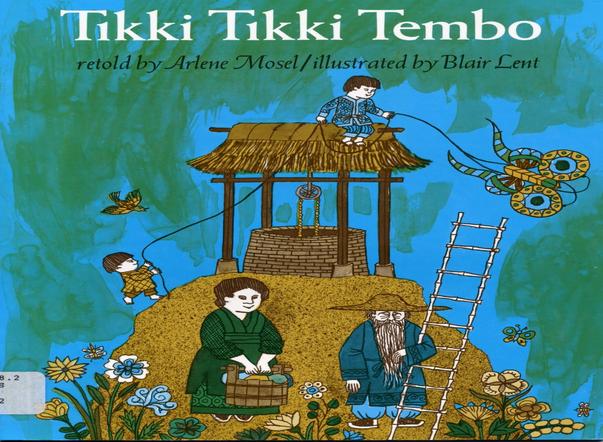
Repetition! Repetition! Repetition! I wasn’t expecting my two-year old and four-year old to love this story so much, but they do. I think it’s because of the repetition picture books often contain. Like stringiness, repetition is one of those techniques I don’t want my students practicing very often because it can easily be overdone. Still, it’s fun and advantageous to talk about how repetition can be used for effect in writing.
Some of the words and phrases repeated in this story include:
- Tikki tikki tembo-no sa rembo-chari bari ruchi-pip peri pembo
- Step over step, step over step he went into the well, picked up little Chang, and step over step, step over step brought him out of the well.
- He pumped the water out of him and pushed the air into him, and pumped the water out of him and pushed the air into him…
After reading, we might ask our students to think about some of these ideas:
- What is the point the author is trying to make when poor little Chang has to repeat his brother’s name over and over again?
- What is the effect of repeating phrases like “step over step” and “pumped the water out of him and pushed the air into him”?
- How are some of these repetitive phrases similar to onomatopoeias?
The Day the Crayons Quit by Drew Daywalt
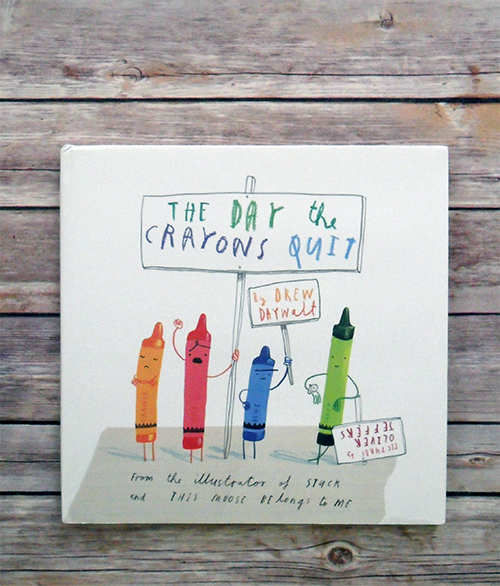
Tone and mood. What more can I say? This book is perfect for analyzing the tone and mood with each crayon and the letter it writes to Duncan. The yellow and orange crayons are clearly bitter and jealous, the pink one feels slighted, the blue crayon is tired, and the peach one is totally embarrassed! While the tone definitely varies per crayon, the mood overlaps somewhat. Still, there are discernible variations with respect how we feel as each crayon shares its sob story on paper. For ideas on teaching tone and mood, check out this original activity and graphic organizer .
If you are interested in spicing in up your grammar lessons, this book would also work well for identifying infinitives. To see what I mean, explore this mentor sentence infinitive exercise .
In the second part of this series, I’ll be addressing additional ideas for teaching literary terms and grammar through more beloved picture books. Which children’s books are your favorite(s)? Drop the titles in the comments!
Get the latest in your inbox!
- [email protected]
Recommended children's booklists sorted by age or topic
- Summer Reads 2024
History Booklists
- Anglo-Saxons
- Ancient Egypt
- See all History booklists

Geography Booklists
- Rocks, Soils & Fossils
- Mountains & Volcanoes
- Rainforests
- Houses & Homes
- See all Geography booklists

Science Booklists
- Famous Scientists
- Human Bodies
- Light & Sound
- Habitats & Ecosystems
- See all Science booklists

Literacy Booklists
- First Chapter Books
- Primary Poetry
- Shakespeare
- Wordless Picture Books
- See all Literacy booklists

PSHE Booklists
- Emotional Literacy & ELSA
- Class Transitions
- Bereavement & Loss
- Mental Health
- See all PSHE booklists
Diverse Booklists
- Cultural Diversity
- Autism & Autistic Characters
- Black History
- All Different Families
- See all Diverse booklists

Arts & Sports Booklists
- Art & Artists
- Dance & Ballet
- Olympics & Paralympics
- See all Arts & Sports booklists

- Seasonal Booklists
- Seasons & Weather
- Festivals & Celebrations
- Back to School
- See all Seasonal booklists

- Preschool Reading List
- Reception Reading List
- All EYFS Booklists
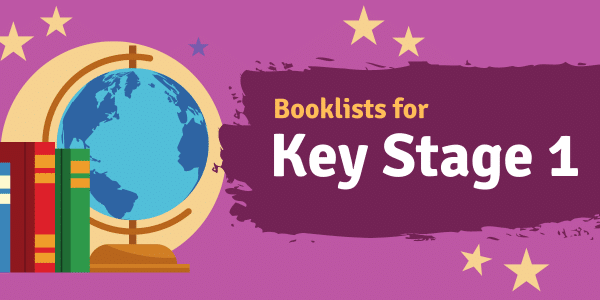
- Reading List for Year 1
- Reading List for Year 2
- All KS1 Booklists
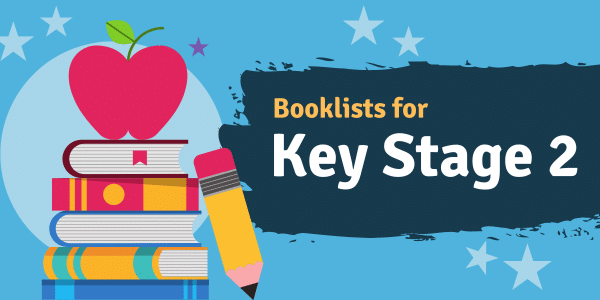
- Reading List for Year 3
- Reading List for Year 4
- Reading List for Year 5
- Reading List for Year 6
- All KS2 Booklists
Best Books by Age
- Age 3 Books
- Age 4 Books
- Age 5 Books
- Age 6 Books
- Age 7 Books
- Age 8 Books
- Age 9 Books
- Age 10 Books
- Age 11 Books
- Age 12 Books
- All Age Groups

- Summer Reading Bingo
- Buy Our Books
- Member Area
Best Picturebooks for Years 5 and 6
Picturebooks are brilliant for all ages in primary schools and are not to be left behind in EYFS and KS1 libraries alone. Shared with older children, the best picturebooks can allow children and adults to share a reading common experience made up of the interplay between the visual and the written word.
In Upper KS2, picturebooks are excellent for opening discussions on important issues like Varmints , for exploring philosophical or political concepts like The Island , for developing empathy and for challenging thinking like I Talk Like A River . Sometimes they simply provide an imaginative reading experience that caters to a visual appetite that is excluded from chapter books offered at this age, like The Midnight Fair . We’ve picked out a list of the best picturebooks that are suitable for children aged 9-11….
NB: If you are looking for more KS2 picturebook recommendations, try Picturebooks for Lower KS2 or Wordless Picturebooks. For even younger readers, head to Storytime Favourites for EYFS .
- KS2 Year 5 Year 6
- Literacy Picturebooks Upper KS2

SAVE 20% with Peters
Visit our booklists on Amazon
Support independent bookshops
Dark and mysterious picturebooks
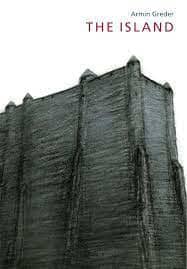
Wordless picturebooks
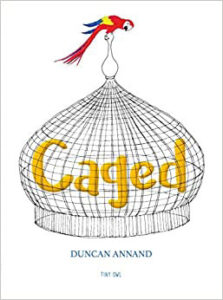
Empathy-building picturebooks
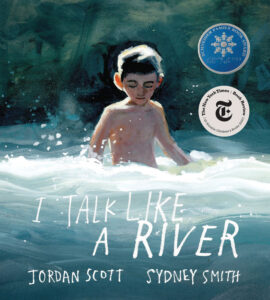
Thought-provoking picturebooks
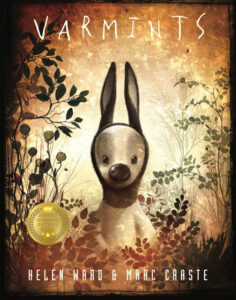
Positive and inspirational picturebooks
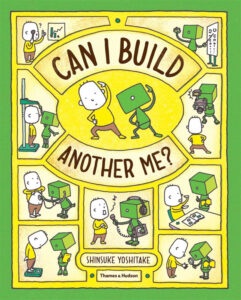
More Booklists Featuring Picturebooks
Picturebooks for Upper kS2 (Ages 9-11) – this page
Picturebooks for Lower KS2 (Ages 7-9)
Whole School Picturebooks
Wordless Picturebooks
Storytime Favourites for EYFS
Branching Out – Books for Fans of Julia Donaldson
You may also like our Year Group booklists , featuring 50 Recommended Reads for each primary school year group, or our curriculum topic booklists .
Booklists you might also like...
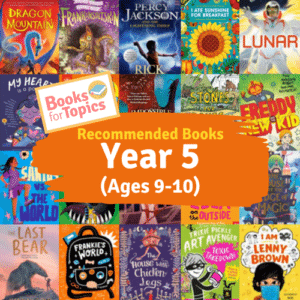
Year 5: 50 Recommended Reads
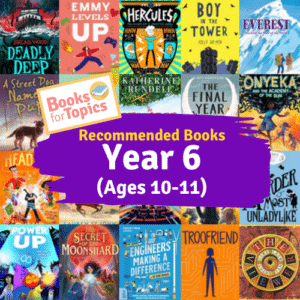
Year 6: 50 Recommended Reads
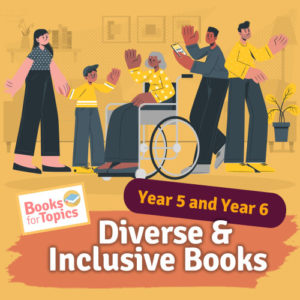
Diverse & Inclusive Books for Upper KS2
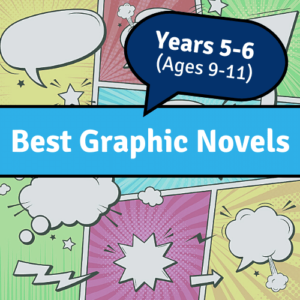
Graphic Novels for Children in Upper KS2
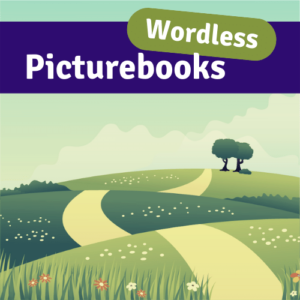
What's new on BooksForTopics?
Environmental themes as backdrop for children’s fiction – sophie mckenzie, new: printable bookmarks for your class, first week back: picturebooks for a new class.

Join our Mailing List
For the latest news on primary books and our booklists, as well as a chance to win in on one of our regular giveaways, sign up to our mailing list.
- Get in touch
Email: [email protected]
Subscribe to our mailing list, booklists by topic, booklists by age, more about us.
Affiliate disclosure: As an Amazon Associate, BooksForTopics earns from qualifying purchases.
As an affiliate partner of Bookshop.Org and Peters, BooksForTopics may earn from qualifying purchases. Click here to learn more.
Website designed by Speckled Frog
© BooksForTopics 2015-2024
Subscribe to our newsletter
Your review.
Year group(s) the book is most suitable for:
Does the book contain anything that teachers would wish to know about before recommending in class (strong language, sensitive topics etc.)?
Would you recommend the book for use in primary schools?
Curriculum links (if relevant)
Any other comments

Literary Agent

✨PB MSWL✨ I love character-driven picture books with fun and special characters, nature and STEAM themes, and books that stem from the author’s childhood or love of their culture.

- Picture books

I tend not to get super specific on my PB MSWLs since I love to be surprised but what I am looking for is the "heart of gold" in the story. Your book can be weird, sweet, funny, lyrical, commercial, whatever, but I want heart.
First up, I am looking for picture books with heart. If your books comps with GRANDPA GRUMPS, NOT QUITE NARWHAL, SKULLS, or any of these, I want to see.

MISC: -I’m looking for illustrated graphic novels in MG and YA (I’m not taking script ONLY atm) -I am open to the occasional PB with a focus on stories about culture and family or navigating the world through a different lens -I always have my eye out for more Canadian authors!
- Graphic Novels
✨#MSWL UPDATE✨ As we head into year-end, I'd love to find more illustrator clients to partner with! If you're interesting in sharing your portfolio, picture book dummy, or GN proposal with me, this is the link 🥰: QueryManager.com/3212/socialmedocialmedia
- Illustrator

Picture Book #MSWL Nos: 🚫 Sports 🚫 Anthropomorphism (outside of NF) 🚫 Issue books, saviorism, or "inspirational" (written to center the dominant narrative of "overcoming" an identity 🚫 First day of school 🚫 Spending the day with a grandparent
Picture Books #MSWL : ☑️ Non-Fiction (biography, STEM, history preferrable. This is also the ONLY place I will consider anthropomorphism: talking objects/animals) ☑️ themes of grief ☑️ break down gender stereotypes ☑️ variety of family structures
It is rare that I have a #PB #MSWL but I am thinking about FOSTER'S HOME FOR IMAGINARY FRIENDS and I would love a picture book that comps to that

#MSWL -More illustrators or author/illustrators, especially marginalized -Poetic, lyrical PBs (but not rhyme) with lots of layers and heart -Creepy, spooky ghost stories (Adult/New Adult) -Gorgeous prose but highly commercial concepts across the board
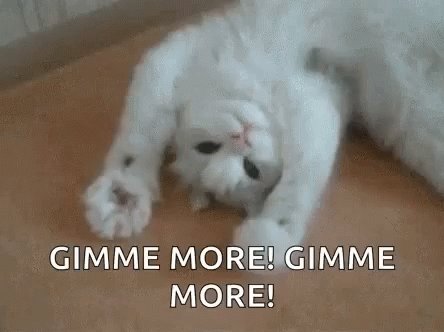
Literary Agency

Looking for Roaring Twenties and Regency era Romantasy! Also looking for picture books about parents WFH, books about being a community helper, and fully illustrated picture books. Kristina is particularly scouting works from authors/illustrators of indigenous or latiné descent.

I'm delighted to share that I'm OPEN to #PB and #MG submissions! I just updated my #MSWL . which can be found here: manuscriptwishlist.com/mswl-post/kaitlyn-sanchez/ And you can submit with this link: bradfordlit.com/kaitlyn-sanchez/ Thank you for trusting me with your work and wishing you all the best!

Updated #MSWL !! manuscriptwishlist.com/mswl-post/katie-monson/ This includes picture book and MG wants, as well as Adult fiction! #kidlit #writingcommunity #literaryagent #agentwants

#MSWL I'm seeking picture book manuscripts with authentic representation of underrepresented religions. While we don't publish picture books that teach religious messages, we want more books for children to see themselves reflected. Please submit: freespiritpublishing.submittable.com/submit/134906/free-spirit-submissions

Picture books with heart and humour! Anywhere on the scale of funny to gentle, please just send your best three texts.

WRITERS: I will be closing to queries on June 8th-so that I can catch up on submissions and focus on client manuscripts. As a reminder, I'm looking for YA/MG/PB and Adult and Kids NF. Polish and send those queries by 6/8 or hang on to them until later in the summer. Thanks!
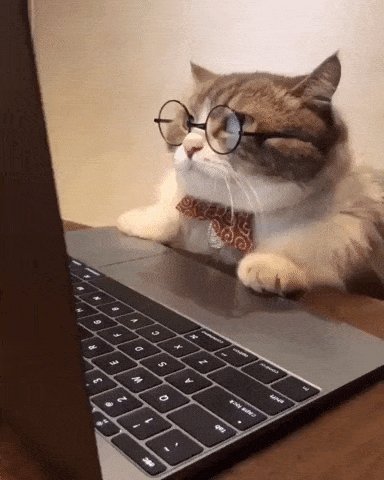
Figen @TheFigen_
I haven’t done a #MSWL in a long time, but if you have a PB manuscript that talks about the power of dance for marginalized communities, I have been thinking about this a lot lately. DM me for my link 💛
WRITERS! New #MSWL w/ a few changes. Still looking for Adult NF (lifestyle, parenting, sports, current events, etc) and YA/MG/PB, but expanding YA/MG to fantasy and still including dystopian/sci-fi/horror/contemporary. Make me laugh, make me sob! manuscriptwishlist.com/mswl-post/shari-maurer/
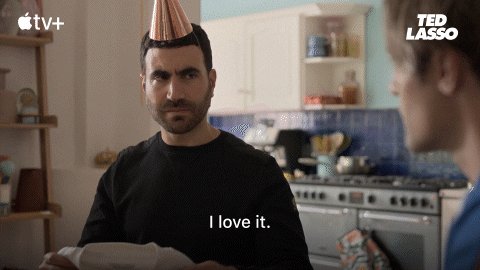
- Contemporary

Lisa loves finding picture books that surprise her with unexpected approaches, big emotions and voice-y writing. Find out more about her #MSWL below! @planningforsun corvisieroagency.com/lisa-gouldy.html

Amanda Gaglione @amandagaglione
Someone please send me a vampire picture book too? I love this! 🧛🏻♂️📖🤞🏼#MSWL
- Literary Assistants
- Editorial Assistants
MSWL Category
- Adult (2193)
- Adventure (471)
- Alternate History (37)
- BIPOC (435)
- Book Club Fiction (107)
- Chapter Books (96)
- Chick Lit (15)
- Children (106)
- Comedy (1040)
- Contemporary (2037)
- Cookbook (186)
- Cozy mystery (313)
- Crime (470)
- Cyberpunk (21)
- Dark Academia (63)
- Detective (72)
- Diverse (1077)
- Dystopian (68)
- Erotic Romance (27)
- Erotica (10)
- Fairy Tale (174)
- Family (654)
- Fantasy (2710)
- Friendship (738)
- Funny (453)
- Ghost (221)
- Gothic (309)
- Graphic Novels (687)
- Heist (190)
- High Concept (328)
- High Stakes (153)
- Historical (1523)
- Horror (1305)
- Humor (504)
- Illustrator (298)
- Inspirational (121)
- LGBT (1560)
- Literary (731)
- Magic (867)
- Magical Realism (402)
- Memoir (279)
- Military (39)
- Mystery (1397)
- Nonfiction (1918)
- OwnVoices (634)
- Paranormal (243)
- Picture books (931)
- Regency (60)
- Retelling (414)
- Revolution (20)
- Romance (2822)
- Romantasy (109)
- Romantic Comedy (985)
- Romantic Suspense (206)
- Sci-fi (1428)
- Southern (142)
- Space Opera (72)
- Speculative Fiction (451)
- Sport (213)
- Steampunk (31)
- Superhero (14)
- Survival (52)
- Suspense (857)
- Thriller (1348)
- Time Travel (63)
- True Crime (113)
- Upmarket (443)
- Urban (122)
- Urban Fantasy (110)
- Vampire (159)
- Western (59)
- Witch (341)
- Women (961)
- Women's fiction (757)
Have a language expert improve your writing
Run a free plagiarism check in 10 minutes, generate accurate citations for free.
- Knowledge Base
- How to write a literary analysis essay | A step-by-step guide
How to Write a Literary Analysis Essay | A Step-by-Step Guide
Published on January 30, 2020 by Jack Caulfield . Revised on August 14, 2023.
Literary analysis means closely studying a text, interpreting its meanings, and exploring why the author made certain choices. It can be applied to novels, short stories, plays, poems, or any other form of literary writing.
A literary analysis essay is not a rhetorical analysis , nor is it just a summary of the plot or a book review. Instead, it is a type of argumentative essay where you need to analyze elements such as the language, perspective, and structure of the text, and explain how the author uses literary devices to create effects and convey ideas.
Before beginning a literary analysis essay, it’s essential to carefully read the text and c ome up with a thesis statement to keep your essay focused. As you write, follow the standard structure of an academic essay :
- An introduction that tells the reader what your essay will focus on.
- A main body, divided into paragraphs , that builds an argument using evidence from the text.
- A conclusion that clearly states the main point that you have shown with your analysis.
Instantly correct all language mistakes in your text
Upload your document to correct all your mistakes in minutes

Table of contents
Step 1: reading the text and identifying literary devices, step 2: coming up with a thesis, step 3: writing a title and introduction, step 4: writing the body of the essay, step 5: writing a conclusion, other interesting articles.
The first step is to carefully read the text(s) and take initial notes. As you read, pay attention to the things that are most intriguing, surprising, or even confusing in the writing—these are things you can dig into in your analysis.
Your goal in literary analysis is not simply to explain the events described in the text, but to analyze the writing itself and discuss how the text works on a deeper level. Primarily, you’re looking out for literary devices —textual elements that writers use to convey meaning and create effects. If you’re comparing and contrasting multiple texts, you can also look for connections between different texts.
To get started with your analysis, there are several key areas that you can focus on. As you analyze each aspect of the text, try to think about how they all relate to each other. You can use highlights or notes to keep track of important passages and quotes.
Language choices
Consider what style of language the author uses. Are the sentences short and simple or more complex and poetic?
What word choices stand out as interesting or unusual? Are words used figuratively to mean something other than their literal definition? Figurative language includes things like metaphor (e.g. “her eyes were oceans”) and simile (e.g. “her eyes were like oceans”).
Also keep an eye out for imagery in the text—recurring images that create a certain atmosphere or symbolize something important. Remember that language is used in literary texts to say more than it means on the surface.
Narrative voice
Ask yourself:
- Who is telling the story?
- How are they telling it?
Is it a first-person narrator (“I”) who is personally involved in the story, or a third-person narrator who tells us about the characters from a distance?
Consider the narrator’s perspective . Is the narrator omniscient (where they know everything about all the characters and events), or do they only have partial knowledge? Are they an unreliable narrator who we are not supposed to take at face value? Authors often hint that their narrator might be giving us a distorted or dishonest version of events.
The tone of the text is also worth considering. Is the story intended to be comic, tragic, or something else? Are usually serious topics treated as funny, or vice versa ? Is the story realistic or fantastical (or somewhere in between)?
Consider how the text is structured, and how the structure relates to the story being told.
- Novels are often divided into chapters and parts.
- Poems are divided into lines, stanzas, and sometime cantos.
- Plays are divided into scenes and acts.
Think about why the author chose to divide the different parts of the text in the way they did.
There are also less formal structural elements to take into account. Does the story unfold in chronological order, or does it jump back and forth in time? Does it begin in medias res —in the middle of the action? Does the plot advance towards a clearly defined climax?
With poetry, consider how the rhyme and meter shape your understanding of the text and your impression of the tone. Try reading the poem aloud to get a sense of this.
In a play, you might consider how relationships between characters are built up through different scenes, and how the setting relates to the action. Watch out for dramatic irony , where the audience knows some detail that the characters don’t, creating a double meaning in their words, thoughts, or actions.
Prevent plagiarism. Run a free check.
Your thesis in a literary analysis essay is the point you want to make about the text. It’s the core argument that gives your essay direction and prevents it from just being a collection of random observations about a text.
If you’re given a prompt for your essay, your thesis must answer or relate to the prompt. For example:
Essay question example
Is Franz Kafka’s “Before the Law” a religious parable?
Your thesis statement should be an answer to this question—not a simple yes or no, but a statement of why this is or isn’t the case:
Thesis statement example
Franz Kafka’s “Before the Law” is not a religious parable, but a story about bureaucratic alienation.
Sometimes you’ll be given freedom to choose your own topic; in this case, you’ll have to come up with an original thesis. Consider what stood out to you in the text; ask yourself questions about the elements that interested you, and consider how you might answer them.
Your thesis should be something arguable—that is, something that you think is true about the text, but which is not a simple matter of fact. It must be complex enough to develop through evidence and arguments across the course of your essay.
Say you’re analyzing the novel Frankenstein . You could start by asking yourself:
Your initial answer might be a surface-level description:
The character Frankenstein is portrayed negatively in Mary Shelley’s Frankenstein .
However, this statement is too simple to be an interesting thesis. After reading the text and analyzing its narrative voice and structure, you can develop the answer into a more nuanced and arguable thesis statement:
Mary Shelley uses shifting narrative perspectives to portray Frankenstein in an increasingly negative light as the novel goes on. While he initially appears to be a naive but sympathetic idealist, after the creature’s narrative Frankenstein begins to resemble—even in his own telling—the thoughtlessly cruel figure the creature represents him as.
Remember that you can revise your thesis statement throughout the writing process , so it doesn’t need to be perfectly formulated at this stage. The aim is to keep you focused as you analyze the text.
Finding textual evidence
To support your thesis statement, your essay will build an argument using textual evidence —specific parts of the text that demonstrate your point. This evidence is quoted and analyzed throughout your essay to explain your argument to the reader.
It can be useful to comb through the text in search of relevant quotations before you start writing. You might not end up using everything you find, and you may have to return to the text for more evidence as you write, but collecting textual evidence from the beginning will help you to structure your arguments and assess whether they’re convincing.
To start your literary analysis paper, you’ll need two things: a good title, and an introduction.
Your title should clearly indicate what your analysis will focus on. It usually contains the name of the author and text(s) you’re analyzing. Keep it as concise and engaging as possible.
A common approach to the title is to use a relevant quote from the text, followed by a colon and then the rest of your title.
If you struggle to come up with a good title at first, don’t worry—this will be easier once you’ve begun writing the essay and have a better sense of your arguments.
“Fearful symmetry” : The violence of creation in William Blake’s “The Tyger”
The introduction
The essay introduction provides a quick overview of where your argument is going. It should include your thesis statement and a summary of the essay’s structure.
A typical structure for an introduction is to begin with a general statement about the text and author, using this to lead into your thesis statement. You might refer to a commonly held idea about the text and show how your thesis will contradict it, or zoom in on a particular device you intend to focus on.
Then you can end with a brief indication of what’s coming up in the main body of the essay. This is called signposting. It will be more elaborate in longer essays, but in a short five-paragraph essay structure, it shouldn’t be more than one sentence.
Mary Shelley’s Frankenstein is often read as a crude cautionary tale about the dangers of scientific advancement unrestrained by ethical considerations. In this reading, protagonist Victor Frankenstein is a stable representation of the callous ambition of modern science throughout the novel. This essay, however, argues that far from providing a stable image of the character, Shelley uses shifting narrative perspectives to portray Frankenstein in an increasingly negative light as the novel goes on. While he initially appears to be a naive but sympathetic idealist, after the creature’s narrative Frankenstein begins to resemble—even in his own telling—the thoughtlessly cruel figure the creature represents him as. This essay begins by exploring the positive portrayal of Frankenstein in the first volume, then moves on to the creature’s perception of him, and finally discusses the third volume’s narrative shift toward viewing Frankenstein as the creature views him.
Some students prefer to write the introduction later in the process, and it’s not a bad idea. After all, you’ll have a clearer idea of the overall shape of your arguments once you’ve begun writing them!
If you do write the introduction first, you should still return to it later to make sure it lines up with what you ended up writing, and edit as necessary.
The body of your essay is everything between the introduction and conclusion. It contains your arguments and the textual evidence that supports them.
Paragraph structure
A typical structure for a high school literary analysis essay consists of five paragraphs : the three paragraphs of the body, plus the introduction and conclusion.
Each paragraph in the main body should focus on one topic. In the five-paragraph model, try to divide your argument into three main areas of analysis, all linked to your thesis. Don’t try to include everything you can think of to say about the text—only analysis that drives your argument.
In longer essays, the same principle applies on a broader scale. For example, you might have two or three sections in your main body, each with multiple paragraphs. Within these sections, you still want to begin new paragraphs at logical moments—a turn in the argument or the introduction of a new idea.
Robert’s first encounter with Gil-Martin suggests something of his sinister power. Robert feels “a sort of invisible power that drew me towards him.” He identifies the moment of their meeting as “the beginning of a series of adventures which has puzzled myself, and will puzzle the world when I am no more in it” (p. 89). Gil-Martin’s “invisible power” seems to be at work even at this distance from the moment described; before continuing the story, Robert feels compelled to anticipate at length what readers will make of his narrative after his approaching death. With this interjection, Hogg emphasizes the fatal influence Gil-Martin exercises from his first appearance.
Topic sentences
To keep your points focused, it’s important to use a topic sentence at the beginning of each paragraph.
A good topic sentence allows a reader to see at a glance what the paragraph is about. It can introduce a new line of argument and connect or contrast it with the previous paragraph. Transition words like “however” or “moreover” are useful for creating smooth transitions:
… The story’s focus, therefore, is not upon the divine revelation that may be waiting beyond the door, but upon the mundane process of aging undergone by the man as he waits.
Nevertheless, the “radiance” that appears to stream from the door is typically treated as religious symbolism.
This topic sentence signals that the paragraph will address the question of religious symbolism, while the linking word “nevertheless” points out a contrast with the previous paragraph’s conclusion.
Using textual evidence
A key part of literary analysis is backing up your arguments with relevant evidence from the text. This involves introducing quotes from the text and explaining their significance to your point.
It’s important to contextualize quotes and explain why you’re using them; they should be properly introduced and analyzed, not treated as self-explanatory:
It isn’t always necessary to use a quote. Quoting is useful when you’re discussing the author’s language, but sometimes you’ll have to refer to plot points or structural elements that can’t be captured in a short quote.
In these cases, it’s more appropriate to paraphrase or summarize parts of the text—that is, to describe the relevant part in your own words:
Here's why students love Scribbr's proofreading services
Discover proofreading & editing
The conclusion of your analysis shouldn’t introduce any new quotations or arguments. Instead, it’s about wrapping up the essay. Here, you summarize your key points and try to emphasize their significance to the reader.
A good way to approach this is to briefly summarize your key arguments, and then stress the conclusion they’ve led you to, highlighting the new perspective your thesis provides on the text as a whole:
If you want to know more about AI tools , college essays , or fallacies make sure to check out some of our other articles with explanations and examples or go directly to our tools!
- Ad hominem fallacy
- Post hoc fallacy
- Appeal to authority fallacy
- False cause fallacy
- Sunk cost fallacy
College essays
- Choosing Essay Topic
- Write a College Essay
- Write a Diversity Essay
- College Essay Format & Structure
- Comparing and Contrasting in an Essay
(AI) Tools
- Grammar Checker
- Paraphrasing Tool
- Text Summarizer
- AI Detector
- Plagiarism Checker
- Citation Generator
By tracing the depiction of Frankenstein through the novel’s three volumes, I have demonstrated how the narrative structure shifts our perception of the character. While the Frankenstein of the first volume is depicted as having innocent intentions, the second and third volumes—first in the creature’s accusatory voice, and then in his own voice—increasingly undermine him, causing him to appear alternately ridiculous and vindictive. Far from the one-dimensional villain he is often taken to be, the character of Frankenstein is compelling because of the dynamic narrative frame in which he is placed. In this frame, Frankenstein’s narrative self-presentation responds to the images of him we see from others’ perspectives. This conclusion sheds new light on the novel, foregrounding Shelley’s unique layering of narrative perspectives and its importance for the depiction of character.
Cite this Scribbr article
If you want to cite this source, you can copy and paste the citation or click the “Cite this Scribbr article” button to automatically add the citation to our free Citation Generator.
Caulfield, J. (2023, August 14). How to Write a Literary Analysis Essay | A Step-by-Step Guide. Scribbr. Retrieved September 3, 2024, from https://www.scribbr.com/academic-essay/literary-analysis/
Is this article helpful?

Jack Caulfield
Other students also liked, how to write a thesis statement | 4 steps & examples, academic paragraph structure | step-by-step guide & examples, how to write a narrative essay | example & tips, what is your plagiarism score.

COMMENTS
Literary Devices: Tone and Tonal Shifts. Llama Llama Red Pajama is a classic board book for good reasons. The message in this book is perfect to teach little ones about object permanence (for my parents out there), but it's even better (in my opinion) to teach secondary ELA students tonal shifts. Little Llama starts off very calm, but ...
Mentor Text PICTURE BOOKS to Teach Sensory Description. Southwest Sunrise by Nikki Grimes, illustrated by Wendell Minor. A little boy is sad to leave New York and move to New Mexico where he observes the beauty of the natural landscape in a multitude of sensory details that celebrate this desert landscape.
create picture books mimicking the writer's style and diction. analyze the effectiveness of the illustrations. write and share a critic's review of the picture book. analyze the subject, occasion, audience, purpose, and speaker. complete a reader response journal entry or free write.
In both cases, the techniques help readers to build clear mind pictures. I love how easily they can be inserted into any type of writing to create a strong impact. Amber on the Mountain (Picture Puffins) The Butterfly Owl Moon. Onomatopoeia. Onomatopoeia is such a big word for such an easy technique.
The Cat Who Lived with Anne Frank by David Lee Miller and Steven Jay Rubin, illustrated by Elizabeth Baddeley. The story of Anne Frank is familiar to adults but pretty heavy to introduce to children. However, this picture book is a kid-appropriate introduction to Anne Frank's story through the perspective of a cat.
19 Opinion Writing Picture Books to Use as Read Alouds in Your Classroom. Emily's Perfect Pet. Hey Little Ant. A Pig Parade is a Terrible Idea. Stella Writes an Opinion. A Bad Case of Stripes. I Wanna Iguana (and other books from the series) Who Would Win Books. The Day the Crayons Quit.
Below, I've included twenty picture books * that work well with my secondary English students. For ease of providing examples, I divided the books into six categories: social emotional learning, creativity, kindness, everyone can write, poetic devices, and background knowledge. Those categories came from conversations students and I had, but ...
As a follow-up to our November 2017 #NCTEchat, Using Mentor Texts, we asked our social media community to share some of their favorite mentor texts with us.So far, we've shared our community's recommendations for mentor texts to teach argument writing and chapter books to teach narrative writing. In the second part of this blog on mentor texts for narrative writing, we'll be focusing on ...
Picture Books to Teach Narrative Writing. Take a peek at my favorite books for teaching narrative writing below. Then keep reading to see how I use them in lessons. The Relatives Came When I Was Young in the Mountains (Reading Rainbow Books) Owl Moon The Rag Coat Three Days on a River in a Red Canoe (Reading Rainbow Books) Thunder Cake.
The third volume of Using Picture Storybooks to Teach Literary Devices joins volumes 1 and 2 of this best-selling series to give teachers and librarians the perfect tool to teach literary devices to students in grades K-12. In this volume, 120 well-reviewed picture storybooks, published mainly in the last few years, are listed (sometimes more than once) under 41 literary devices.
Picture Books that Demonstrate Persuasive Writing. Each picture book on this list uniquely shares a style of persuasive writing that can help your student (s) fine-tune their own writing. The True Story of the Three Little Pigs Green Eggs and Ham Don't Let the Pigeon Drive the Bus! The Great Kapok Tree: A Tale of the Amazon Rain Forest Click ...
Overview. In this lesson, students explore the concepts of plot development and conflict resolution through focused experiences with picture books. The class searches the text and illustrations for cues to the development of the book's plot and the resolution of the story's conflict. They then use a graphic organizer to complete a structured ...
Imagine a City by Elise Hurst. Whimsical artwork accompanies prompts to imagine a more unique world — one with flying fish buses and teatime with gargoyles. This book would make a wonderful drawing or writing prompt. Pick an illustration and use it as a foundation for your own world. Boat of Dreams by Rogerio Coelho.
7. Children's Books. We don't always think to use picture books with older students, but they are one of my absolute favorite ways to scaffold literary analysis! Because picture books are short, we can cover an entire (and often complex) story in a short period of time. And, we can continually refer back to that text throughout the school year.
Sparse, lyrical language with evocative illustrations capture the colors of the seasons. " Brown the squirrel. Brown the mouse. Brown the trees around our house. " Absolutely lovely. Read these lovely picture books to find simile examples and metaphor examples! They're full of beautiful imagery and will help your growing writers learn ...
Step 1: Choose the Right Picture Book. The foundation of any successful interactive read-aloud lesson is selecting an engaging and descriptive picture book. Look for books with rich language, vivid illustrations, and a story that resonates with your students. A great choice often includes a story that evokes strong emotions, places, or ...
Chris Van Allsburg is very good at creating a strong character using thoughts and actions. In this book, we discuss how to use a character's actions to portray their character. Chris Van Allsburg creates this selfish, greedy, character, Monsieur Bibot, through actions and dialogue. It is a great book to demonstrate "show don't tell.".
With over 100 books in publication, Jan Fields writes both chapter books for children and mystery novels for adults. She's also known for a variety of experiences teaching writing, from one session SCBWI events to lengthier Highlights Foundation workshops to these blog posts for the Institute of Children's Literature.
With cherished classics and contemporary award winners, written and illustrated by the superstars of children's literature, these popular picture books are sure to delight readers — young and old — for generations.. Picture books are a timeless way to engage your students with a multisensory experience that can help increase vocabulary, understand sentence structure, and encourage ...
One option is simply to introduce the concept you are studying to students. Ask them to jot a few notes. Then, read the mentor text children's book to them, analyzing aloud as you go. Show students how you pause to notice what the author is doing. Then, question why the author has used this language or made this writing decision.
Here are 3 specific ideas for picture books to teach language elements in secondary. ... it can easily be overdone. Still, it's fun and advantageous to talk about how repetition can be used for effect in writing. Some of the words and phrases repeated in this story include: ... # children's literature # infinitives # literary terms # picture ...
We've picked out a list of the best picturebooks that are suitable for children aged 9-11…. NB: If you are looking for more KS2 picturebook recommendations, try Picturebooks for Lower KS2 or Wordless Picturebooks. For even younger readers, head to Storytime Favourites for EYFS. KS2 Year 5 Year 6. Literacy Picturebooks Upper KS2.
D. Ann Williams @dawilliamsbooks · Jun 30. Picture Book #MSWL Nos: 🚫 Sports. 🚫 Anthropomorphism (outside of NF) 🚫 Issue books, saviorism, or "inspirational" (written to center the dominant narrative of "overcoming" an identity. 🚫 First day of school. 🚫 Spending the day with a grandparent. Picture books.
Step 1: Reading the text and identifying literary devices. Step 2: Coming up with a thesis. Step 3: Writing a title and introduction. Step 4: Writing the body of the essay. Step 5: Writing a conclusion. Other interesting articles.